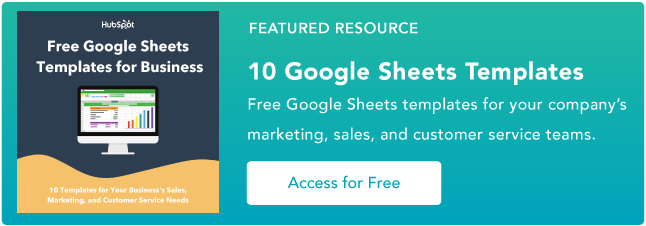There’s an obscure album by an equally obscure guitarist named Duck Baker called There’s Something for Everyone in America. That idea that “there’s something for everyone” doesn’t just apply to America — the concept is also relevant to niche blog topics.
Everyone has something that’s meaningful and interesting to them in its own right, and in a lot of cases, those kinds of passions and pursuits can be channeled into a well-crafted, consistently maintained blog property.
Here, we’ll go over what you need to consider when choosing a blog topic and round up the most profitable blog niche ideas you can choose from.
Skip to:
What is a blog niche?
A blog niche is a specialized topic you’ll be focusing on when creating content. While it may feel like covering a broad topic may net more readers, your audience will get more out of the content you create if it’s narrowed down. Staying within your topic niche will enable you to create content that is most relevant to your audience’s needs and interests, which will help create a loyal following.
How to Choose Your Niche Blog Topic
So what should you blog about? How do you land on the topic that will resonate most with readers and keep you fulfilled in the long run? Well, first and foremost, you need to consider your areas of expertise.
Where are you an authority? What can you talk about comfortably and compellingly? If you write a blog in some niche you only halfway understand, readers won’t be receptive to it. They want to hear from an expert — someone who can demonstrate that they’re qualified to offer tips or trustworthy opinions. But it doesn’t end there.
Writing a blog is a personal pursuit, so you need to write about something that bears personal significance. What do you like to write about? There has to be some degree of joy and enthusiasm behind your blog.
It takes a lot of work to maintain a blog. It’s tough to keep that effort up if you don’t actually enjoy what you’re writing about. You have to start your blog under the assumption that it will take a while to get off the ground. Here are a few directions you can take when determining the type of blog you’d like to create:
- Subject: These blogs are based on subjects like pop culture or entertainment.
- Industry: These blogs focus on an industry like real estate or marketing.
- Audience: These blogs focus on a target audience like students or entrepreneurs.
You’re probably not going to be able to monetize your site or sell ad space immediately, so you need to be in it — in large part — for the love of the sport.
Your niche has to reflect your passion because you’ll probably be writing for the sake of writing for a while. Attracting an audience is neither easy nor a given. If you don’t care about your preferred topic, you’ll be less inclined to stick it out.
We’ve grouped over 100 blog niche ideas below by category to help you quickly find the right fit for your interests.
Career
1. Career Advice
There’s always a market for professional guidance — particularly in uncertain times.
2. Learning Employable Skills
Job seekers can always use an edge on their competition. If you can offer the insight or resources to give them that leg up, you can find a solid audience.
3. Networking
Networking can be intimidating for the shy and introverted. There’s an art to doing it properly and building meaningful relationships. If you can demystify this process, your efforts will be rewarded.
4. Finding Your Dream Career
Career paths aren’t always linear. It may take several years and switching industries before individuals hone in on what they truly enjoy. Create content that helps others bring their career goals into focus.
5. Professional Social Media Tips
Business owners often look for advice on how to bolster and enhance their presence on social media. If you have some experience in this arena, you can likely find a solid readership.
Business
6. Entrepreneurship
It seems these days everyone has a side hustle or is thinking about starting one. Guide newbies through the process of creating their own businesses with entrepreneur content.
7. Running a Startup
Similarly to entrepreneurship, running a startup isn’t for the faint of heart. Help startups perform at their best with content that steers them clear of common pitfalls.
8. Securing Funding & Business Finance
One of the most challenging aspects of starting a business is securing funding. Your blog could create content on how to crowdfund or seek capital from established investors.
9. Hiring
The success of any business is tied to the people who work for it. Create content that helps companies recruit the best and brightest.
Marketing
10. Copywriting
Good copy can make or break getting sales and attracting new customers. Whether email, website design copy, or advertising, marketers are always on the hunt for ways to improve.
11. Content Marketing
Help marketers create successful content marketing campaigns that will keep them coming back to you for more.
12. Social Media Marketing
Social media trends are always changing. Help your audience get the most out of their efforts and stay on top of trends.
Sales
13. Sales Hacks and Resources
Sales reps are always looking for more ways to convert new customers and maximize their efficiency. Offer your expertise and quality templates that help them make the sale.
14. Sales Strategy
It’s nearly impossible to increase sales for a company without a solid plan. That’s where you come in, providing guidance and best practices to help teams reach their goals.
15. Software Recommendations
Automation can help make sales teams more productive. Cover the latest software releases disclose which sales tools are worth investing in.
16. B2B and B2C
Both B2C and B2B sales require a different approach. Help your audience master one or both these avenues.
17. E-Commerce
Just about every business is online. Help businesses grow by providing best practices, tools, and tips for selling online.
Web Development and Design
18. UX Design
If design is your expertise, offer your audience some industry best practices, how to skill up, and keep them updated on industry news.
Education
19. Study Hacks
There will always be a base of students looking to improve their study game. If you’re particularly savvy when it comes to tips and tricks to boost your grades, consider this niche.
20. Parent Teaching Tools
Teaching is a group effort. Help parents provide more learning support for their kids by giving them materials to build upon the lessons taught in class.
21. Language Instruction
Nesvarbu, ar tai būtų praktiniai, ar asmeniniai tikslai, yra daugybė žmonių, kurie norės išmokti naujų kalbų. That’s Lithuanian for, “Whether it be for practical or personal purposes, there are plenty of people who will want to learn new languages.”
22. SAT and ACT Prep
College preparation can be stressful for students. Help them perform their best on the SAT and ACT entrance exams by providing sample tests and other relevant materials.
Real Estate
23. Home Ownership
Buying a home is one of the most important decisions people make in life and is a huge undertaking. Help your audience navigate the funding, contracts, inspections to prepare them for homeownership.
24. Investment Property
From house-hacking, buying multi-family properties, buying vacation homes, and investing in REITs, real estate investment is a hot topic.
25. Market Updates
Covering shifts in the real estate market can help your audience make better property buying choices.
26. Interior Design
Once a home is purchased, the fun part starts: decorating. If you have an eye for design and organization, creating an interior design blog may be for you.
27. Renovations
If you’ve ever watched HGTV, you know that home improvement and renovation content is quite popular, if not addicting. Help your audience create their dream home with your renovation expertise.
Pop Culture and Entertainment
28. Acting Tips
If you’re an experienced actor who can share stories and insight that’ll help newbies refine their craft and prepare for auditions, consider giving this niche a shot.
29. Celebrity Content
Who doesn’t love some good celeb gossip? Tap into a ready-made audience by covering celebs, their new projects, outfits, and whatever else interests you.
30. Concert Reviews
This niche is particularly fun and active. If you can reliably make it to shows and offer meaningful criticism, look into it.
31. Film or TV Reviews
There’s a sizable audience for an aficionado who can dish out some compelling opinions about new movies or TV shows. If you’re an outspoken film connoisseur, try this niche.
32. Music Reviews
This point is similar to the one above. An articulate music buff can rein in a sizable audience by offering their takes on new albums.
33. Stand-Up Comedy Instruction
Newer stand-up comics can always use a little (or a lot) of guidance as they’re starting out. There’s definitely an audience for a comedy veteran to offer some tips, tricks, and anecdotes.
Gaming
34. Video Game Tutorials
There’s a solid population of gamers looking for walkthroughs and assistance through the trickier parts of certain games. If you’re an experienced gamer who can provide that help, look into this niche.
35. Industry News
Video game releases can be just as highly anticipated as movies. Cover the latest drops, games in the works, and related news.
36. Gaming as a Side Hustle
Gaming is no longer just a hobby. Players have been able to turn their love for games into a lucrative business venture.
37. Card and Board Games
There’s a lot of material to draw from card and board games. It’s a fun niche with an active base.
Finance
38. Budget Shopping
Everyone loves a bargain. If you’re a particularly deal-savvy shopper, check this niche out.
39. Frugal Living
People are always after ways to live a little smarter financially. This niche lets you demonstrate exactly how cost-conscious you are day-to-day.
40. Investment
Do you have a knack for calling all things Wall Street? If so, consider creating a blog up this alley.
41. Personal Finance
People will always need to know how to balance a checkbook and do taxes, so there’s a good chance you can generate readership by covering those kinds of financial fundamentals.
42. FIRE
A growing movement in personal finance is financial independence retire early or FIRE. This strategy enables participants to save and invest as much of their income as possible now, so that they can retire early and live comfortably off their investments. If you’ve retired early, are work optional, or simply interested in documenting your own FIRE journey, this niche is for you.
43. Crypto Currency
The crypto currency industry has seen a lot of ups and downs but the topic remains popular. If you find alternative currencies interesting, crypto could be the topic for you.
Food and Beverage
44. Coffee
Coffee enthusiasts are always looking for information on new blends. There’s a market for someone who can offer some astute coffee reviews and bean referrals.
45. Craft Beers
Similar to coffee, there’s an audience that loves craft beer and wants to be pointed towards hot new breweries.
46. Exotic Cuisine
Big-time foodies are active online. A lot of traffic can come with some interesting culinary exploits and tales of exotic cuisines.
47. Kitchen Equipment
Consumer electronics and accessories — specifically, those related to cooking — are always a big draw.
48. Meal Planning
Writing about regimented meal prep can bring in all kinds of readers — from cost-conscious consumers to health nuts.
49. Recipes and Cooking Tutorials
People are always looking for fresh new ways to prepare meals and snacks. If you have a knack for cooking, you might want to look into this idea.
50. Canning and Preservation
During the pandemic folks were cooking much more and learning how to make ingredients stretch. As such, home steading and food preservation practices experienced a resurgence.
51. Vegan Recipes
Alternative meats have come a long way from the early days. Plus, with a new found emphasis on eating healthy, veganism and vegan recipes are seeing a surge in popularity. If vegan eats are your vibe, this niche could be lucrative one.
Fashion and Beauty
52. Affordable Fashion
High fashion is great, but not everyone can afford it. If you’ve got an eye for style on a budget, this niche is a great fit.
53. Sustainable Fashion
With more consumers being mindful of fast fashion and waste, thrifting and more sustainable practices have been getting the spotlight. You could cover emerging sustainability trends, trendsetters, and brands that are leading the way.
54. Haircare Tips
With tons of products on the market, styling practices and hair textures, the possibilities for this topic are endless.
55. Makeup Tutorials
Makeup tutorials have become a big hit across most social media platforms — a blog that capitalizes on that trend can be lucrative if done right.
56. Brand and Product Reviews
The beauty industry is constantly churning out new products and services. You can review them so your audience doesn’t have to learn the hard way through trial and error.
57. Industry News
Everyone wants the scoop on the latest trends in fashion, the newest “it” model, or the most anticipated collections.
58. Emerging Designers
You don’t need to cover big names to gain traction for your fashion blog. Instead, focus on up and coming designers. Not only will it be easier to get access to them for interviews, but you’ll be able to cover their career trajectory.
Pets
59. Pet Health and Care Tips
There is a huge learning curve for new pet owners. What’s the best food? The best pet insurance? How often should they go to the vet? Help your audience navigate life as a pet parent by consolidating all the information the could need into one, easy-to-read place.
60. Dog Training
Got a gift for training pups? You could turn that experience into a dog training blog. Offer best practices, techniques, and an overview of dog behavior. Are certain breeds more challenging than others? If so, state those quirks. The more more actionable advice you can give, the better.
61. Product Reviews
Yes, even dogs can be critics. But seriously, not all products were created equally. Help your audience sift through the products worth buying for their beloved pups and which ones aren’t worth the hype.
62. Adoption Success Stories
Who doesn’t love a happy ending? This is a great option for someone that works in an animal shelter or fosters pets. You can document their journey and help them find their forever home.
63. Farming
Living off-grid and homesteading gained traction during the pandemic as people moved away from dense urban centers. Some bought land and decided to try farming and growing their own food. If you’ve got tips on raising chickens, livestock, or just how to manage land, you may consider this as your niche. If you’re new, you could also opt to document your experience.
Hobbies
64. Gardening
Green thumb readers can always use some tips, tricks, and new plants to incorporate into their gardening repertoire.
65. Photography
Whether it’s a forum to offer tips to aspiring photographers or a place to post your own art, a photography blog can draw a solid crowd.
66. Writing
It might be slightly meta, but writing about writing can be a big hit. Many aspiring authors and columnists love a source for new prompts and pointers.
67. Music-Tutorials
Do you play an instrument? If so, that hobby could net you a captive audience of fellow musicians.
68. Knitting
Knitting isn’t just for grandmas. People of all ages are getting involved using it as a way to decompress and do something creative with their time. If you’re a skilled knitter, you can create a blog paired with a personal storefront to sell your wares and materials.
69. Books
If you’re a member of the literati, a book based blog may be for you. Create a book club with your audience, profile authors, and review your favorite books.
Technology
70. AI
Compellingly writing about new and emerging tech can attract a forward-thinking base looking for the next big thing. Right now, the biggest trend is artificial intelligence, or AI
71. Software and App Reviews
Are you always on top of the latest software developments and popular apps? Then creating a niche around software may be just the thing for you.
72. Electronics Reviews
Is that new phone worth the hype? Are you a gadget guru your friends come to for advice when they want to buy a new product. Create your own tech-savvy version of wirecutter for consumer electronics.
Personal Relationships
73. Blending Families
It’s a touchy, tricky subject to handle, but it’s a tough challenge a lot of people face. They stand to gain a lot from some sound advice on the topic.
74. Dating
Dating can be a minefield, and if you know how to help people navigate it, you can build a sizable, dedicated following.
75. Parenting
It’s arguably the hardest part of life — if you can make it that much easier for people, you’ll attract a solid audience.
76. Relationship Advice
Love ain’t always easy. That’s why plenty of potential readers are looking for someone who can help them figure it out as they go.
77. Weddings
Almost everyone looks forward to their big day, but planning a wedding means having a lot of balls in the air. Anyone who can help soon-to-be newlyweds successfully juggle them can find an audience.
News and Politics
78. Current Events
In the modern age, people need to stay on top of the news. If you can keep them posted with some eloquence and integrity, you can find readers.
79. Ethics
We could all use a refresher on basic human decency and morality every now and then. A well-crafted ethics blog can rein in a crowd that wants to do that consistently.
80. Political Opinions
Do you have some incisive, compelling political takes to offer? There might just be an audience that wants to hear what you have to say.
81. Political Satire
Sometimes, we need to see the humor in the modern political landscape. If you can tastefully (or not-so-tastefully) find it, there could be a solid readership for it.
Self-Care and Wellness
82. Meditation
There are plenty of readers looking to be a bit more mindful and a lot more centered. A meditation blog can tap into that population.
83. Mental Health
It’s an important topic that is (deservedly) getting a lot more attention nowadays than it has in recent years. If you can offer some meaningful insight on how to improve readers’ mental wellbeing, you’ll find an audience.
84. Self-Care
A more general, catch-all self-care blog can register with plenty of potential readers looking to improve every facet of their wellbeing.
85. Skincare
Skincare is a hot topic. There’s a massive crowd looking for the best products and techniques to keep their pores small and skin smooth.
Sports and Exercise
86. Extreme Sports
Out-there, wilder sports can be extremely entertaining in their own right, and there’s always a market for “extremely entertaining.”
87. Personal Training
Hardly anyone can afford a real personal trainer. Posting workouts — no matter how rigorous — can attract an audience composed of everyone from dedicated fitness nuts to newbies just starting their fitness journey.
88. Running
Running is one of the most fundamental, popular fitness pursuits. There are plenty of readers who would want to hear about your running exploits and anecdotes.
89. Specific Sports
Football, baseball, basketball, soccer — sports are a staple of modern life. If you can consistently break news or offer interesting takes on a given sport, you can find a base.
90. Weight Loss
A lot of people are looking to shed some weight. If you can publish workouts or provide inspiration for weight loss, you can find a fairly dedicated audience.
91. Workout Trends
People want to stay hip to emerging workout trends, so providing news about and guidance for bold new ways to get can help you wrangle in some readers.
Travel
92. Hotel Reviews
Whether they’re looking to book rooms or just want to live vicariously through your incredible hotel stays, there will always be a base interested in hotel reviews.
93. Travel Stories
Travel stories are some of the best ones you can tell. If you have some wild, outlandish exploits to share from your time in Bangkok, Paris, or wherever else, consider maintaining a travel blog.
94. Traveling for Work
Sometimes, travel is for business — not pleasure. There are plenty of readers interested in learning how to do that right.
95. Trip Reviews
A lot of people want to know which destinations are worth their time, and they might find a nicely maintained trip review blog entertaining and appealing.
96. City Itinerary Guides
Provide your audience with a curated city itinerary to help them hit all the worthy attractions in a given timeframe.
97. Budget Travel
While travel does require funds, it often more affordable than people think. From budget-friendly destinations to travel hacking with credit card points, you can help your audience see the world without going broke.
98. Luxury Travel
For some, money is no option. Enter the world of luxury travel. Scope out the most luxurious accommodations in glamorous locales, giving your readers all the details they need for their dream vacation.
99. Living Abroad
Whether moving a broad for work, family, or fun, navigating the process of such a large move is tricky. Help your audience navigate immigration requirements and what to expect in their new home country.
100. Van Life
Who needs a house when you can travel the country in a decked out van. From finding the right van for DIY builds, how-to tutorials, to accessing internet and RV parking, expertise from van lifers is highly sought after.
101. Digital Nomad
With remote work becoming normalized, many workers have taken the opportunity to hopscotch from country to country or city to city. If you’ve mastered the art of being a digital nomad, there’s an eager audience looking for advice to do the same.
There’s a Niche for Everyone
As you can assume, this list of blog niches isn’t exhaustive. There are more than 100 potential topics listed to choose from. If you’re looking to start a blog but don’t know what to write about, consider your passion and areas of expertise before anything else.
It comes down to a matter of want. You need to consider both what people will want to hear and what you will want to talk about.
Editor’s note: This article was originally published in October 2020 and has been updated for comprehensiveness.
![]()




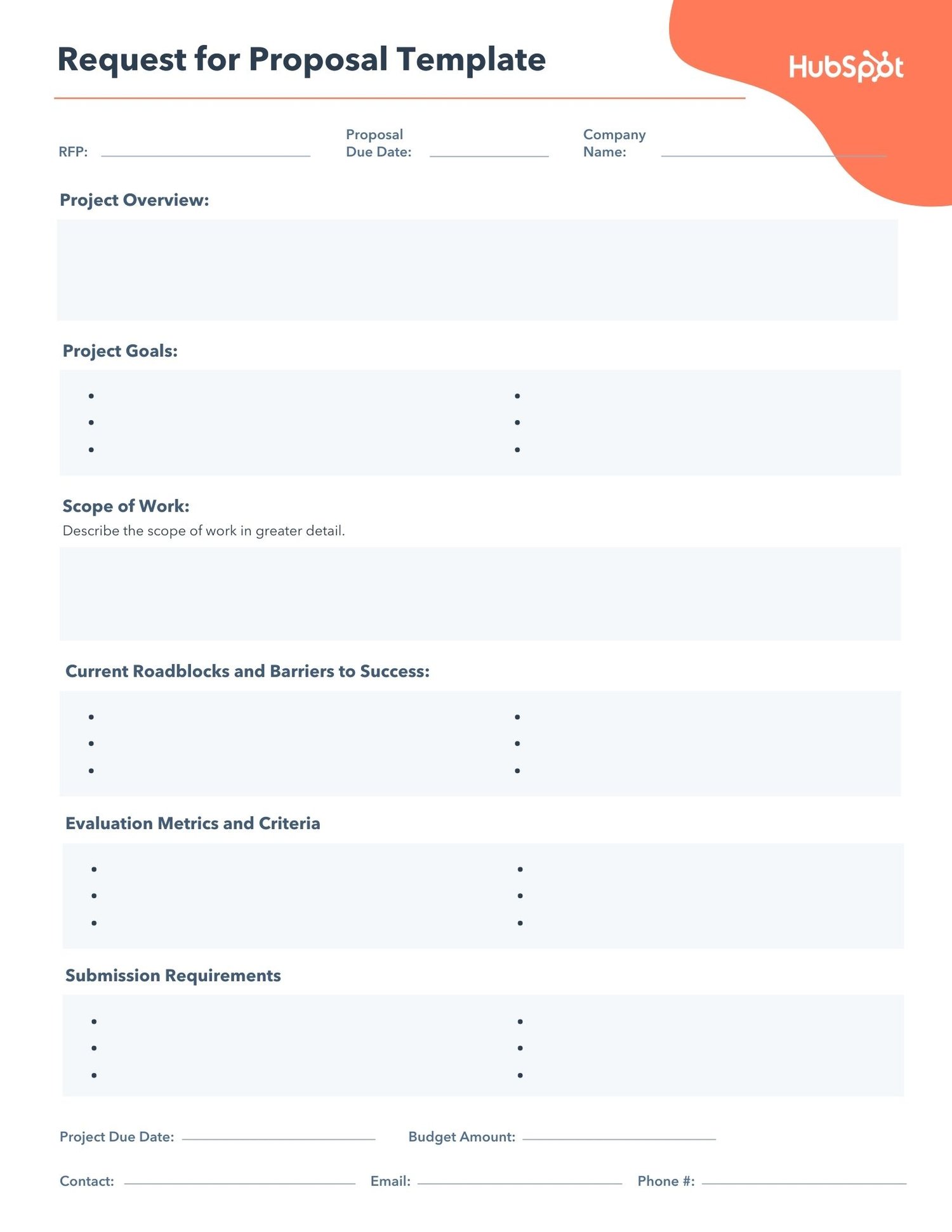
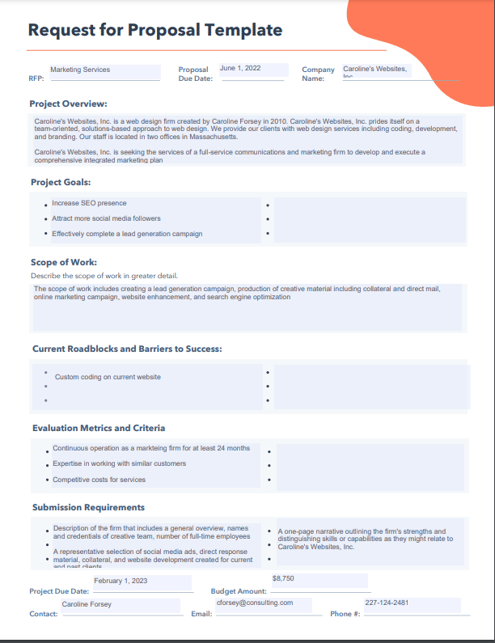
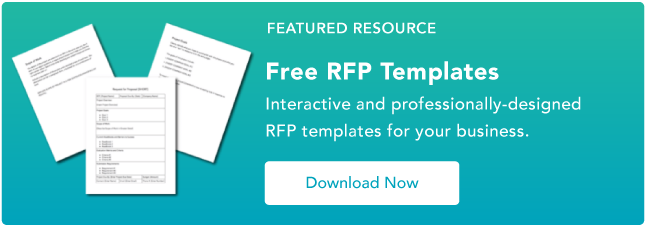
![Download Now: Free Marketing Plan Template [Get Your Copy]](https://i4lead.com/wp-content/uploads/2023/05/aacfe6c7-71e6-4f49-979f-76099062afa0.png)
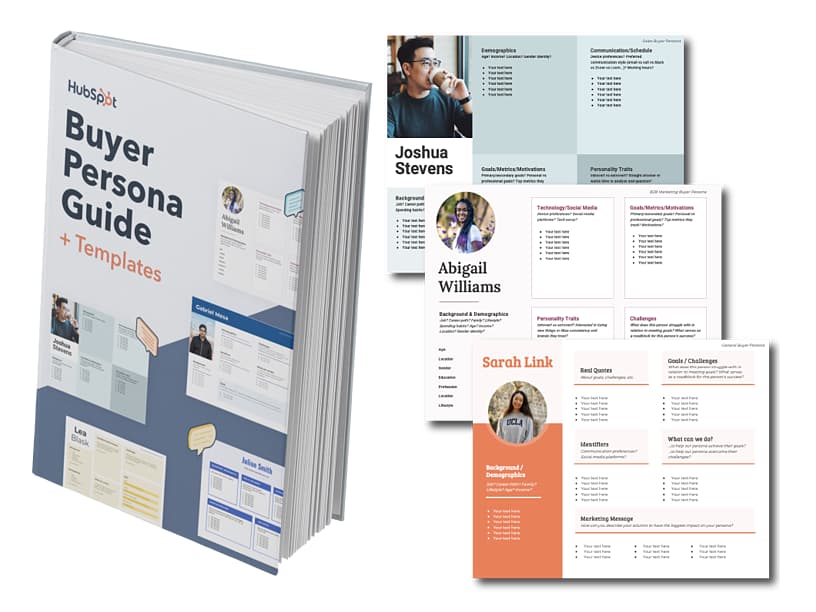
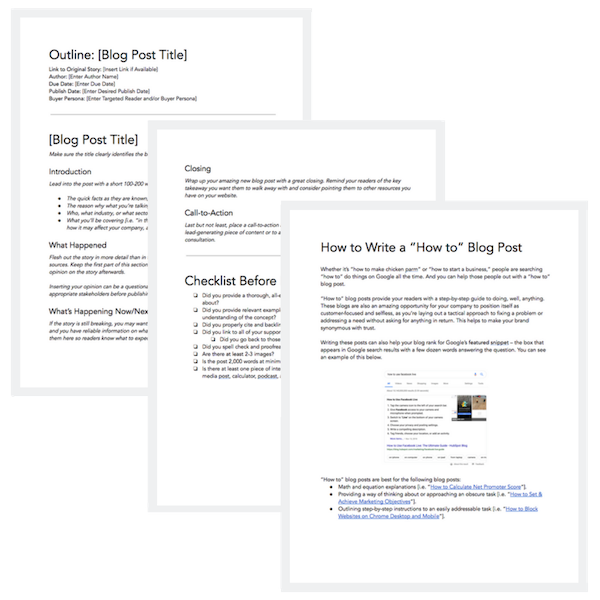
![The Social Media Content Calendar Template Every Marketer Needs [Free Template]-4](https://i4lead.com/wp-content/uploads/2023/05/The2520Social2520Media2520Content2520Calendar2520Template2520Every2520Marketer2520Needs25205BFree2520Template5D-4.jpg)
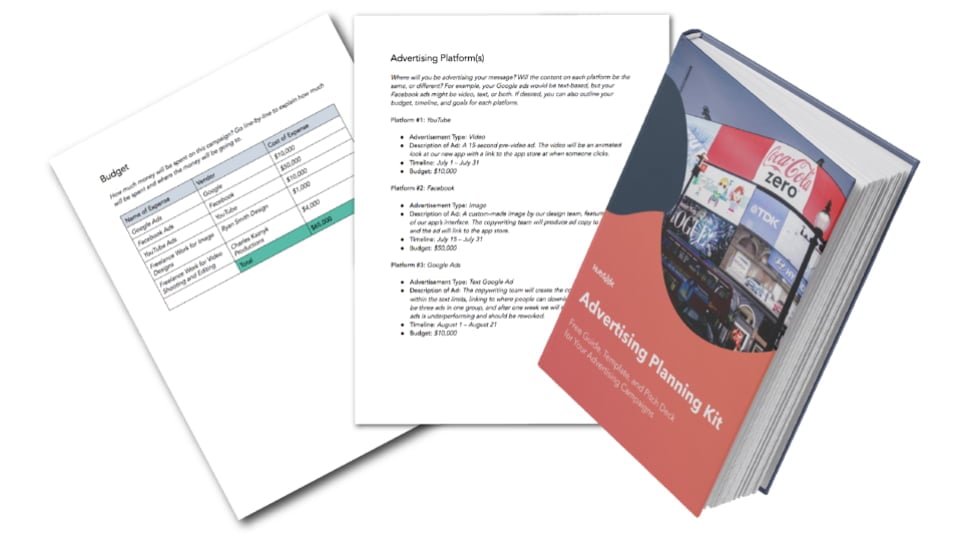
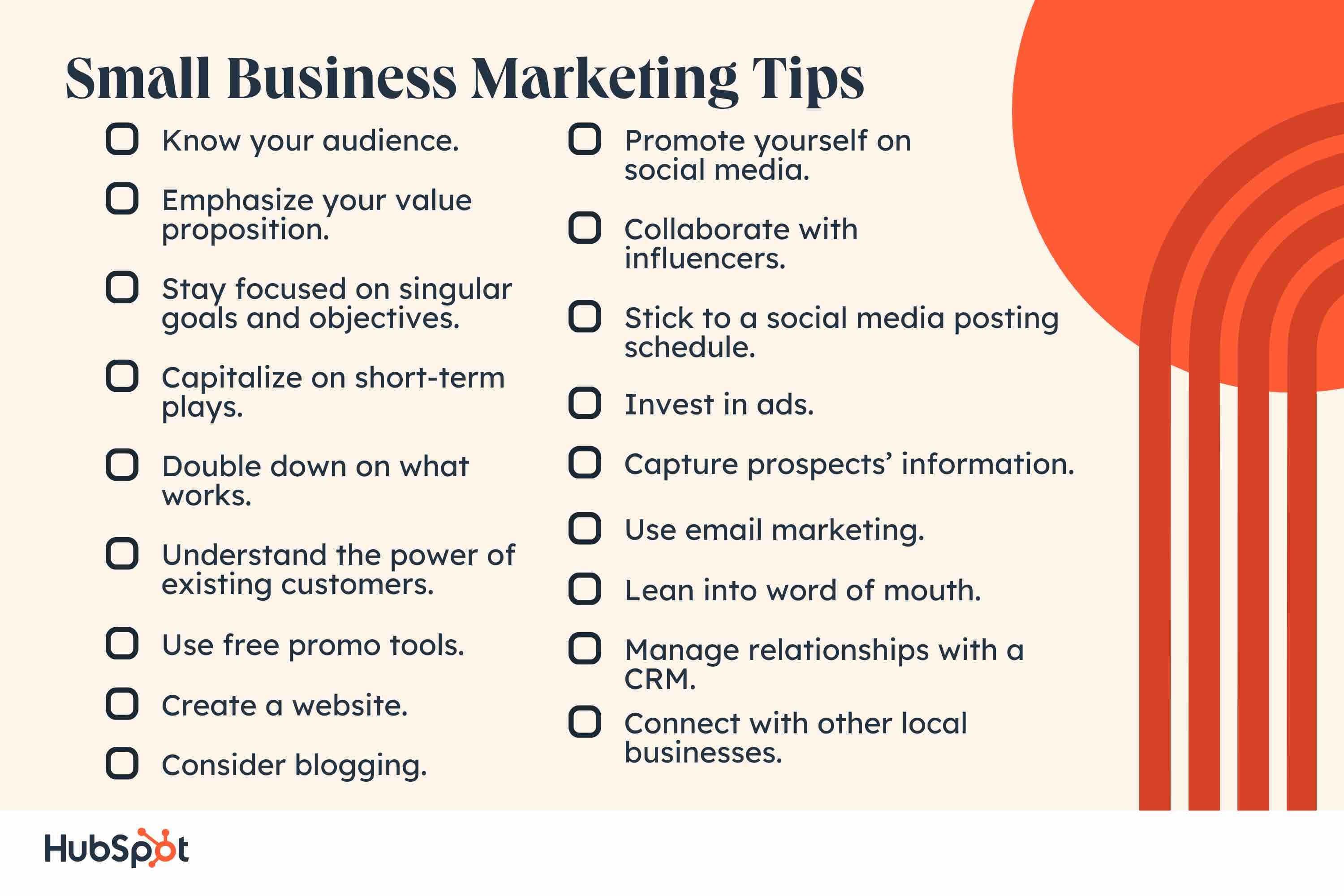 Online Marketing Tips for Small Businesses
Online Marketing Tips for Small Businesses
![→ Free Templates: How to Use YouTube for Business [Download Now]](https://i4lead.com/wp-content/uploads/2023/05/b33cfd44-133a-49e3-a943-086c5679d485-1.png)
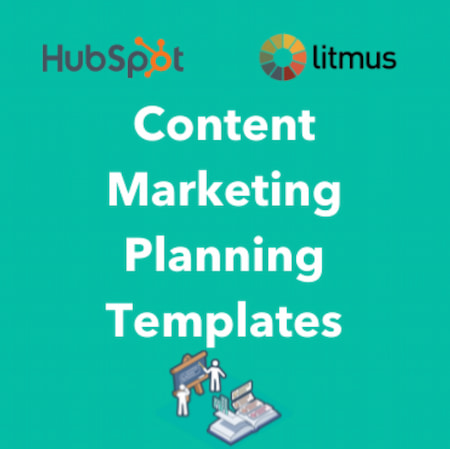
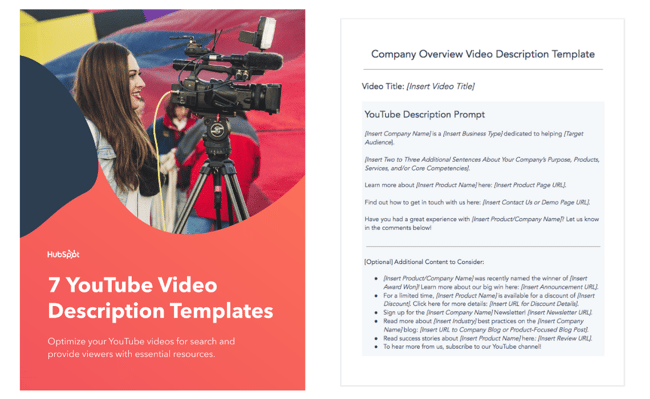
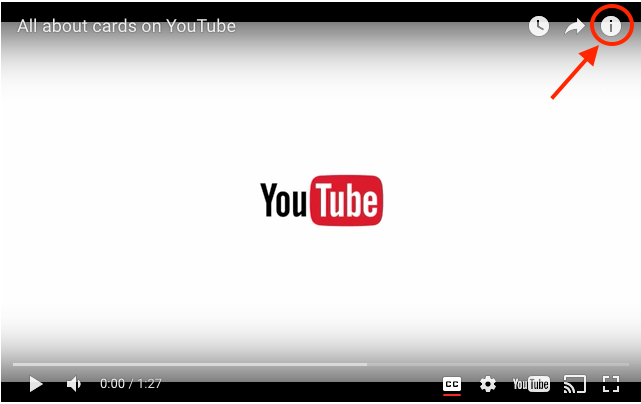
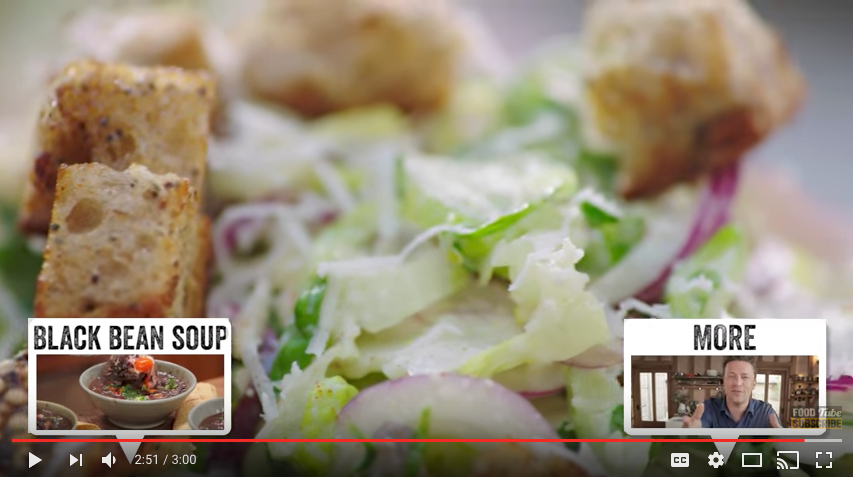
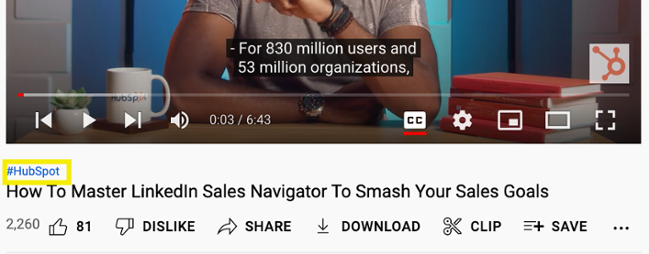 We also recommend using hashtags in your YouTube description, but don’t go overboard; the YouTube algorithm constantly checks for spam. Overly hashtagging may get you inadvertently flagged. Instead of using every hashtag you can think of, choose 2-3 that you feel most accurately describe your video.
We also recommend using hashtags in your YouTube description, but don’t go overboard; the YouTube algorithm constantly checks for spam. Overly hashtagging may get you inadvertently flagged. Instead of using every hashtag you can think of, choose 2-3 that you feel most accurately describe your video.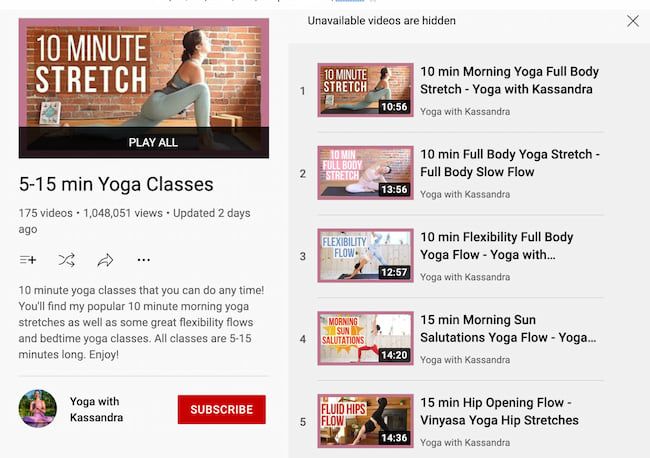 For example, Yoga with Kassandra grouped all of its short yoga classes in a playlist titled “
For example, Yoga with Kassandra grouped all of its short yoga classes in a playlist titled “ Be sure to leave an engaging comment that furthers the conversation or offers more value for readers. Here at HubSpot, for example, we leave a resource pinned so that viewers can further their knowledge on the topic. Check out this post for more on
Be sure to leave an engaging comment that furthers the conversation or offers more value for readers. Here at HubSpot, for example, we leave a resource pinned so that viewers can further their knowledge on the topic. Check out this post for more on 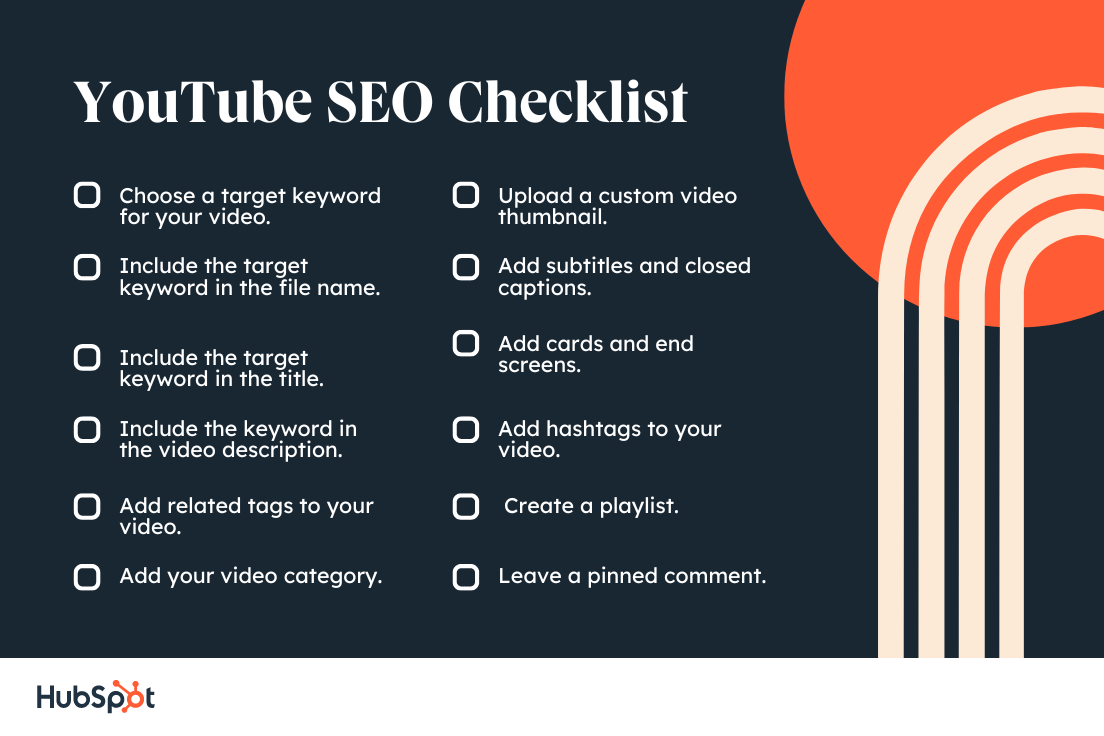
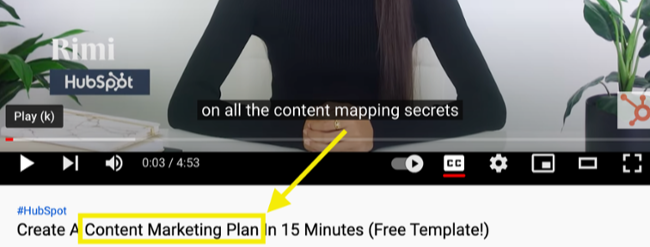 4. Include the keyword, as well as keyword variations, in the video description. The video description is the lifeblood of your YouTube SEO strategy. Write a natural description with 1-2 mentions of your target keyword, as well as variations of this keyword.
4. Include the keyword, as well as keyword variations, in the video description. The video description is the lifeblood of your YouTube SEO strategy. Write a natural description with 1-2 mentions of your target keyword, as well as variations of this keyword.
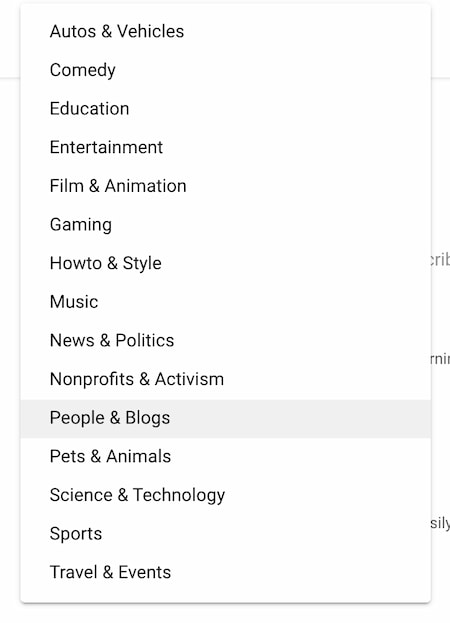
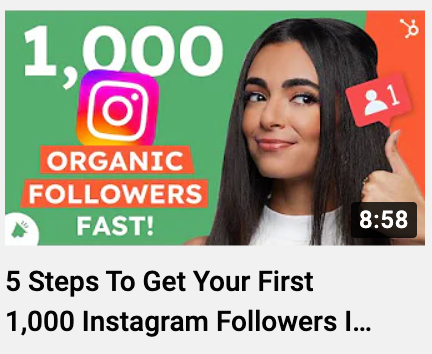 8. Add subtitles and closed captions. Subtitles and closed captions are a much-needed accessibility component of your videos. They also indirectly help you optimize for YouTube search by giving YouTube a text version of your video content.
8. Add subtitles and closed captions. Subtitles and closed captions are a much-needed accessibility component of your videos. They also indirectly help you optimize for YouTube search by giving YouTube a text version of your video content.
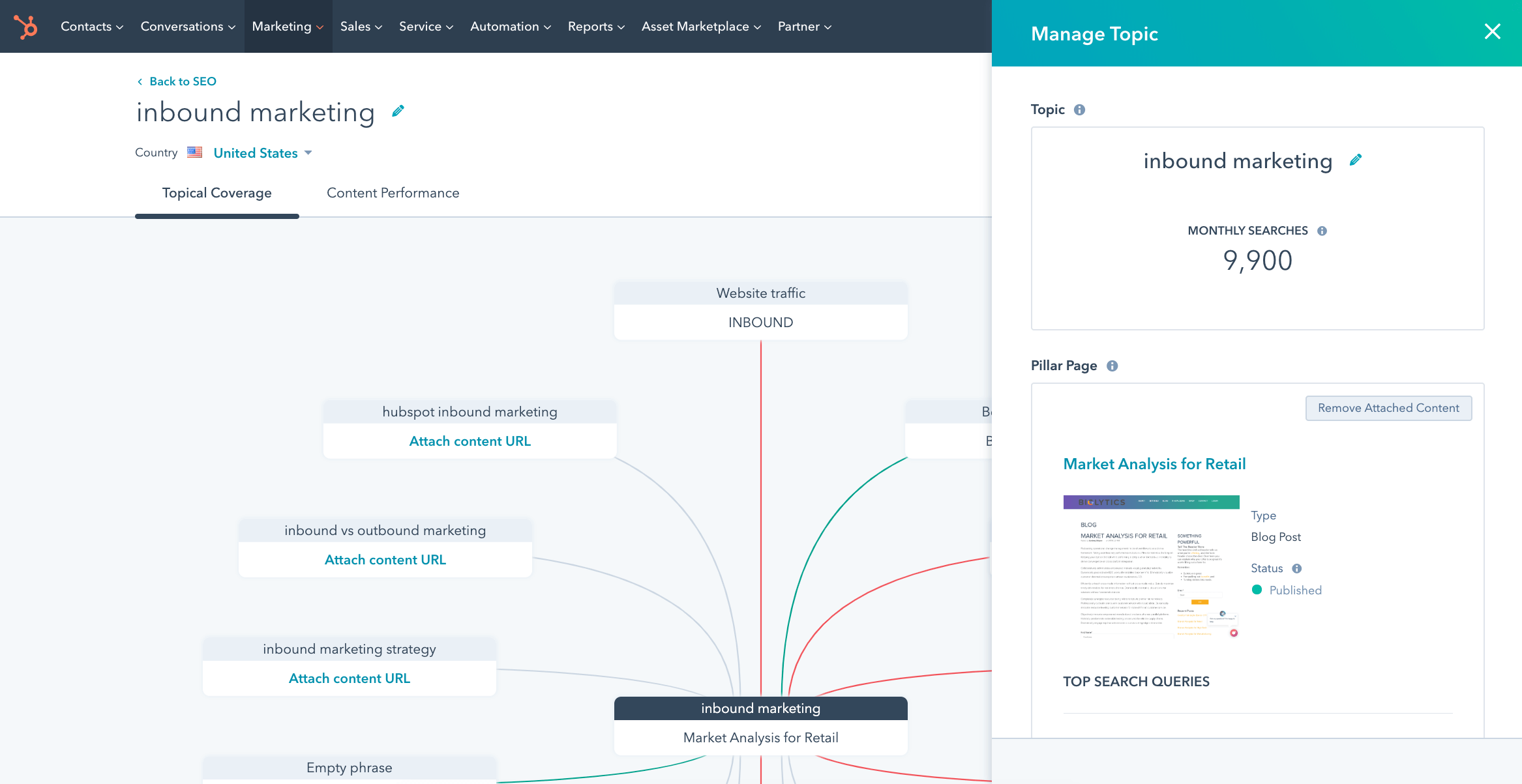
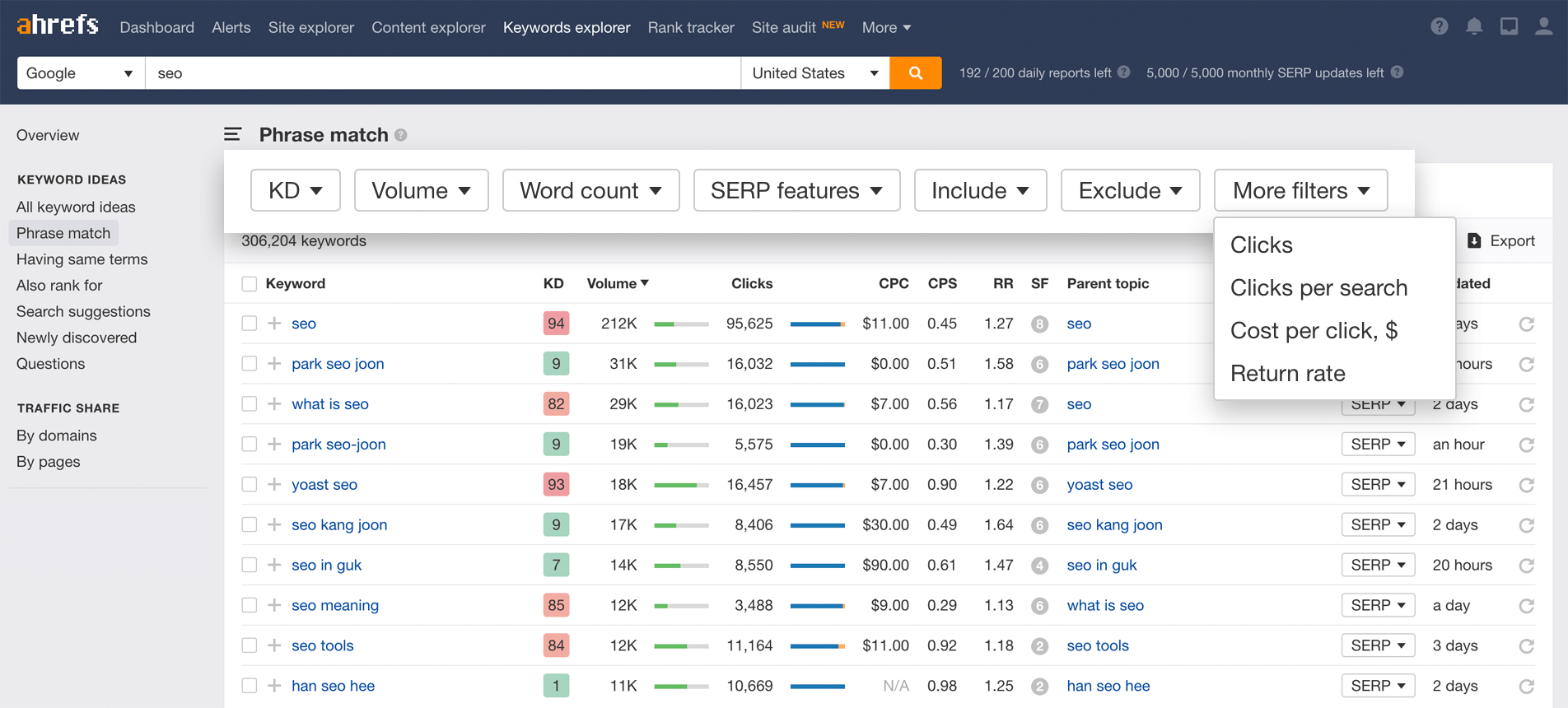
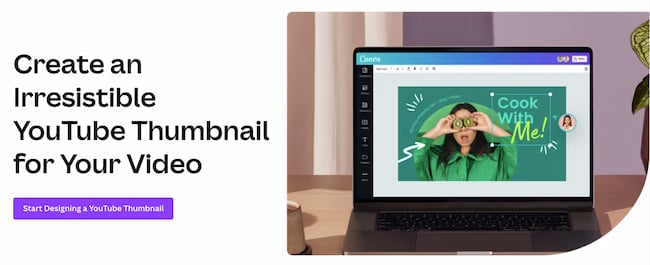
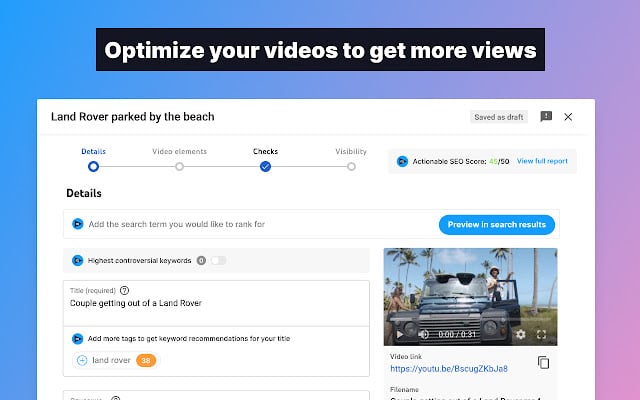 This is a Chrome extension, available through Chrome’s web store in the link above, that helps you analyze how and why certain YouTube videos perform so well. This includes the tags a video has been optimized for, its average watch time, and even how quickly that video might be gaining traffic.
This is a Chrome extension, available through Chrome’s web store in the link above, that helps you analyze how and why certain YouTube videos perform so well. This includes the tags a video has been optimized for, its average watch time, and even how quickly that video might be gaining traffic.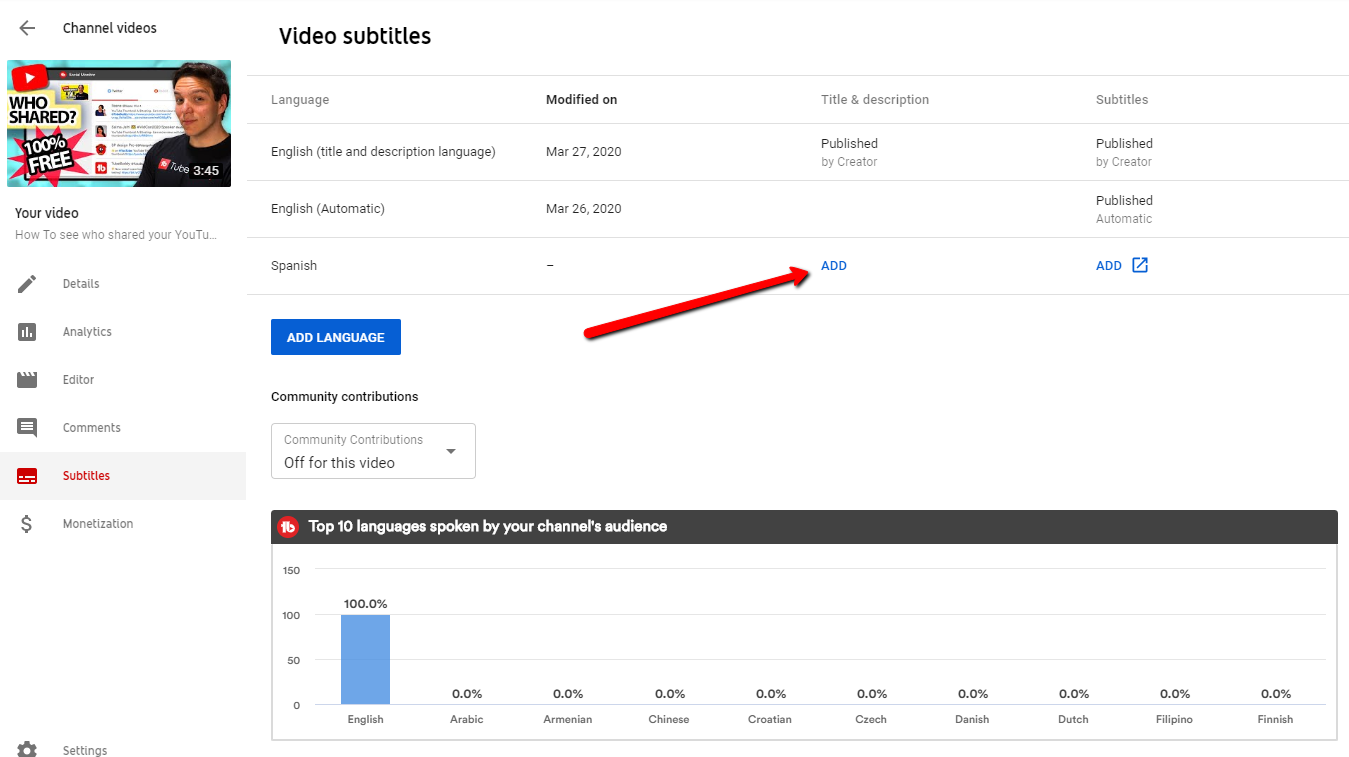 TubeBuddy is an all-in-one video platform that helps you manage the production, optimization, and promotion of your YouTube content. Its features include an automatic language translator (which helps you rank for non-English keywords), a keyword explorer, tag suggestions, a rank tracker for your published videos, and more.
TubeBuddy is an all-in-one video platform that helps you manage the production, optimization, and promotion of your YouTube content. Its features include an automatic language translator (which helps you rank for non-English keywords), a keyword explorer, tag suggestions, a rank tracker for your published videos, and more.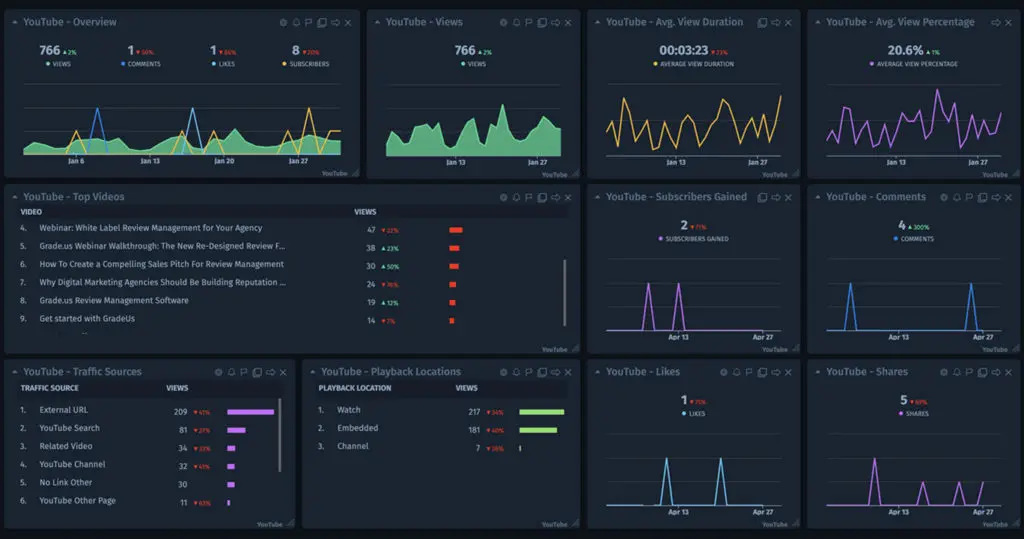 Cyfe is a large software suite that offers, among other things, a YouTube analytics platform. On this platform, you can track performance on YouTube and on your site.
Cyfe is a large software suite that offers, among other things, a YouTube analytics platform. On this platform, you can track performance on YouTube and on your site.



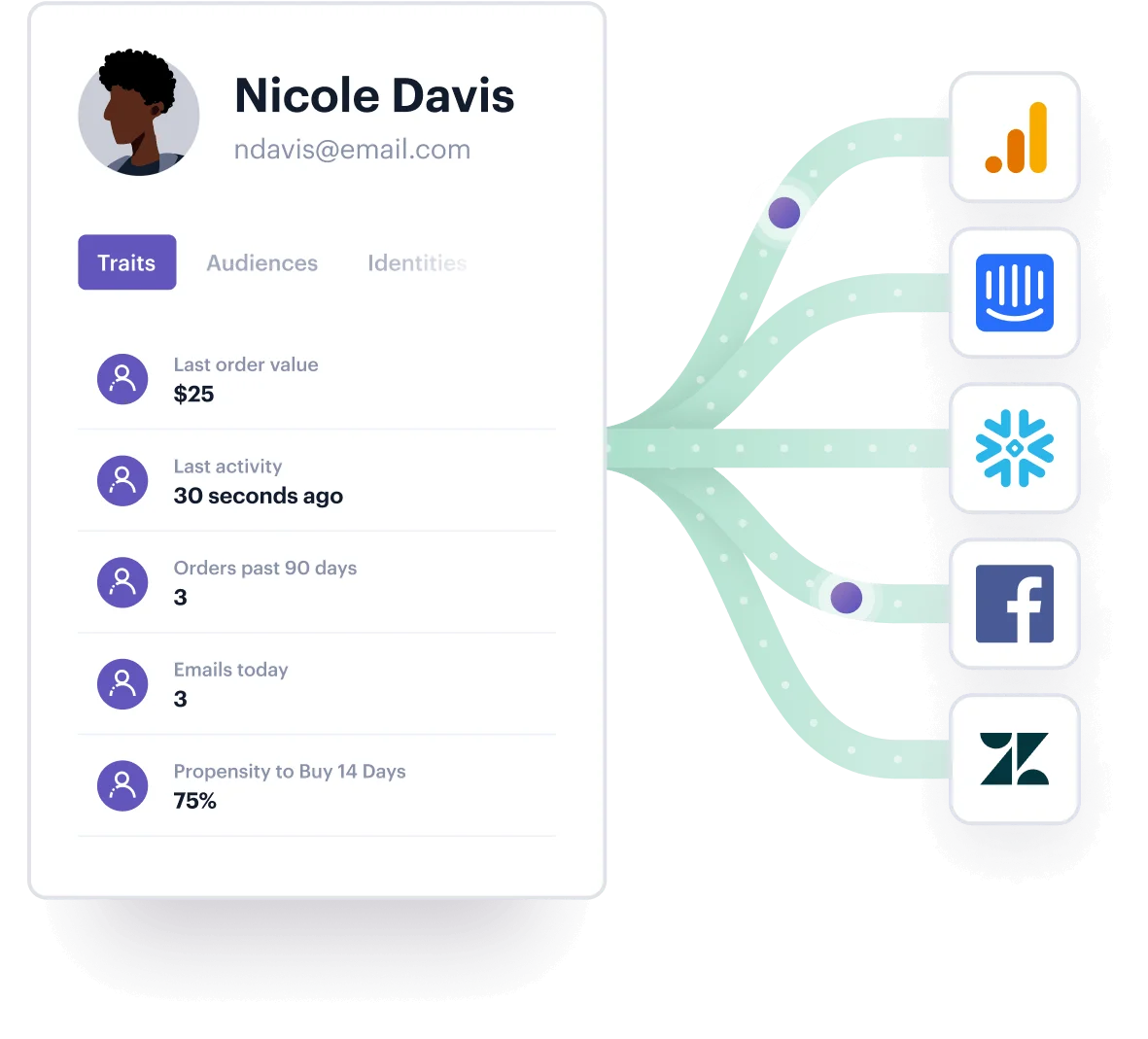

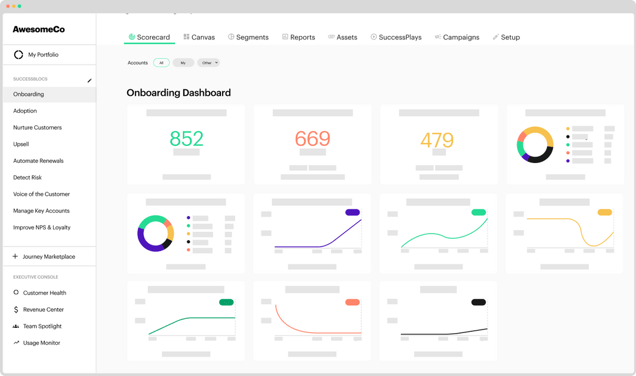

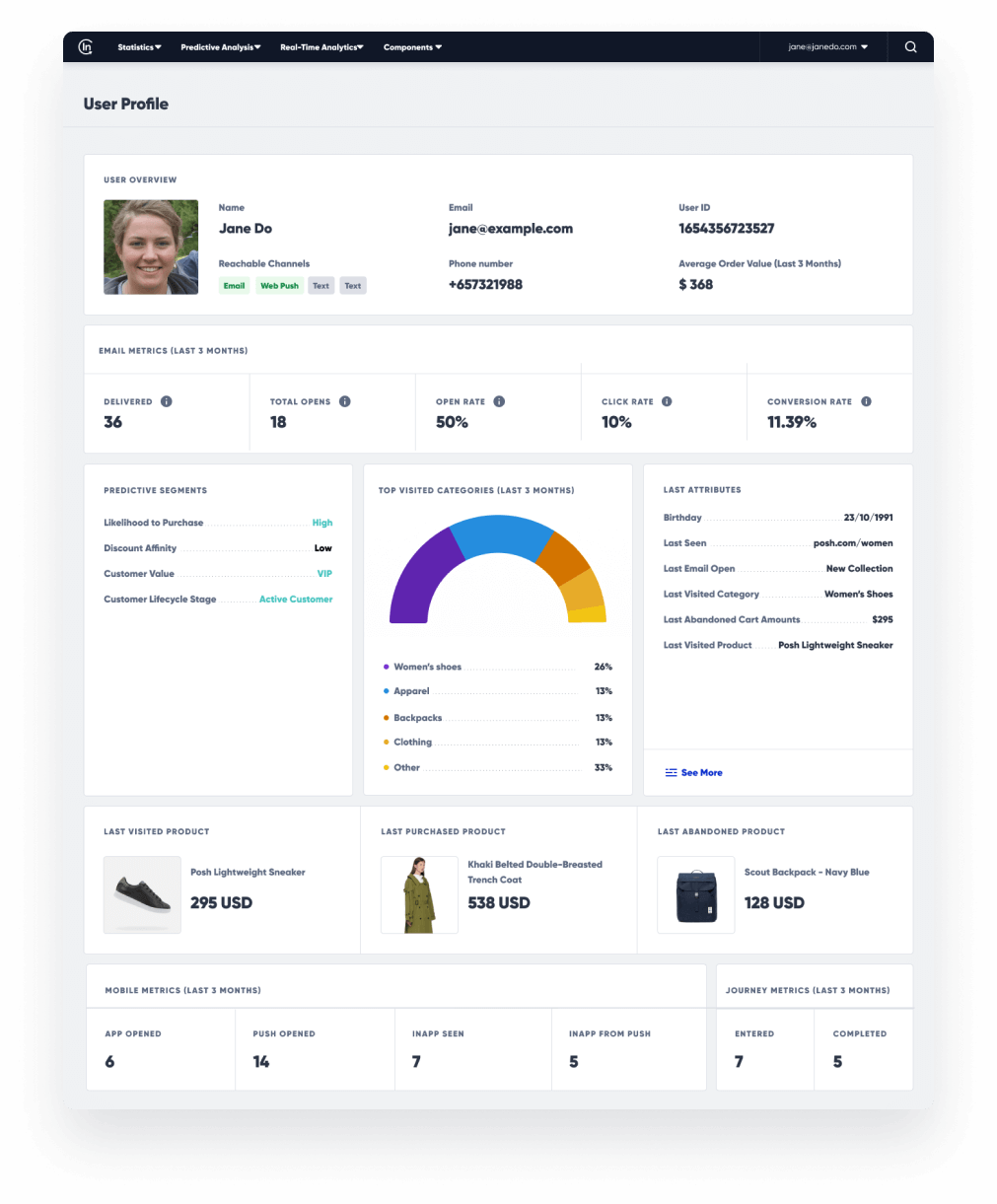
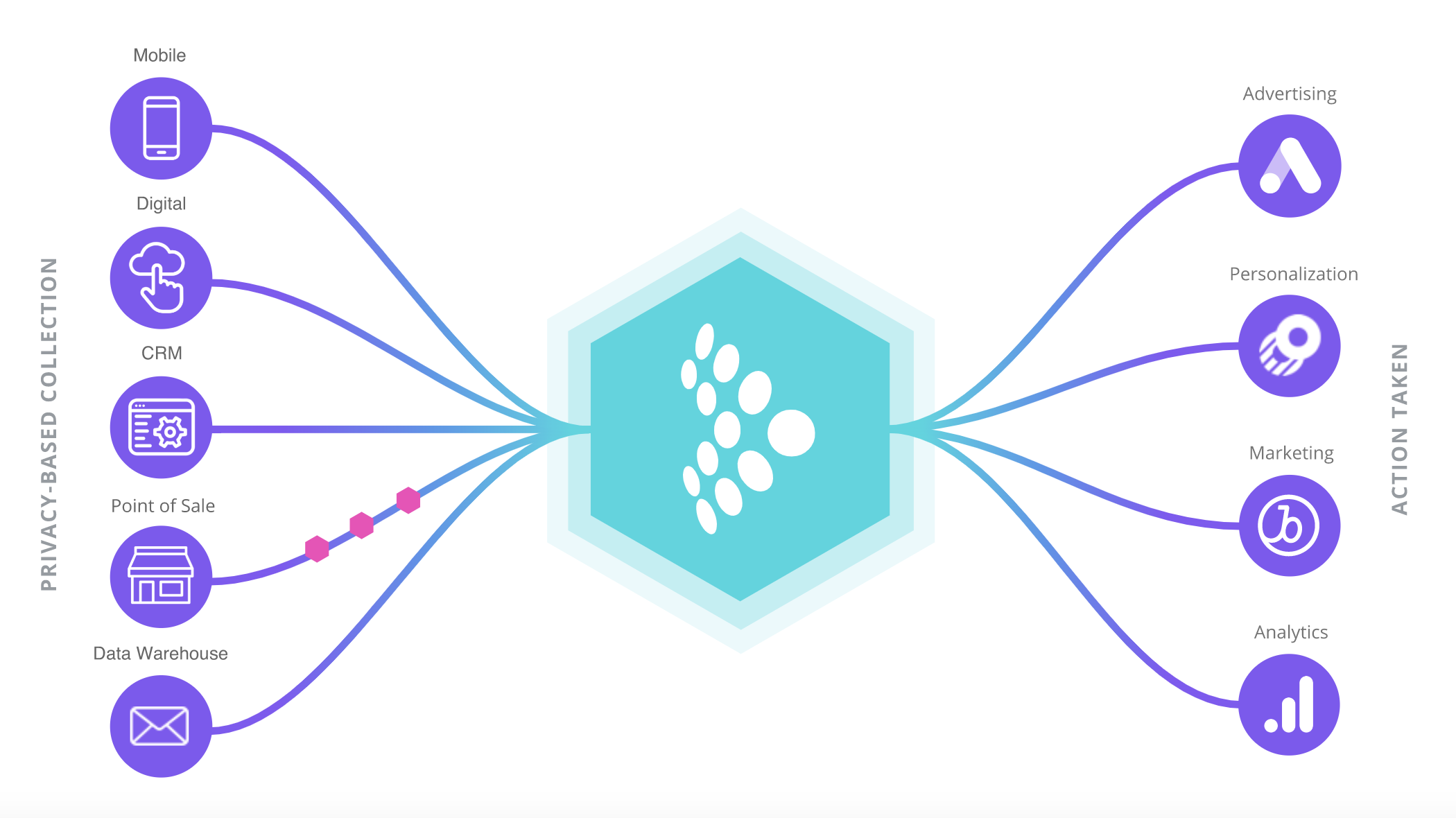
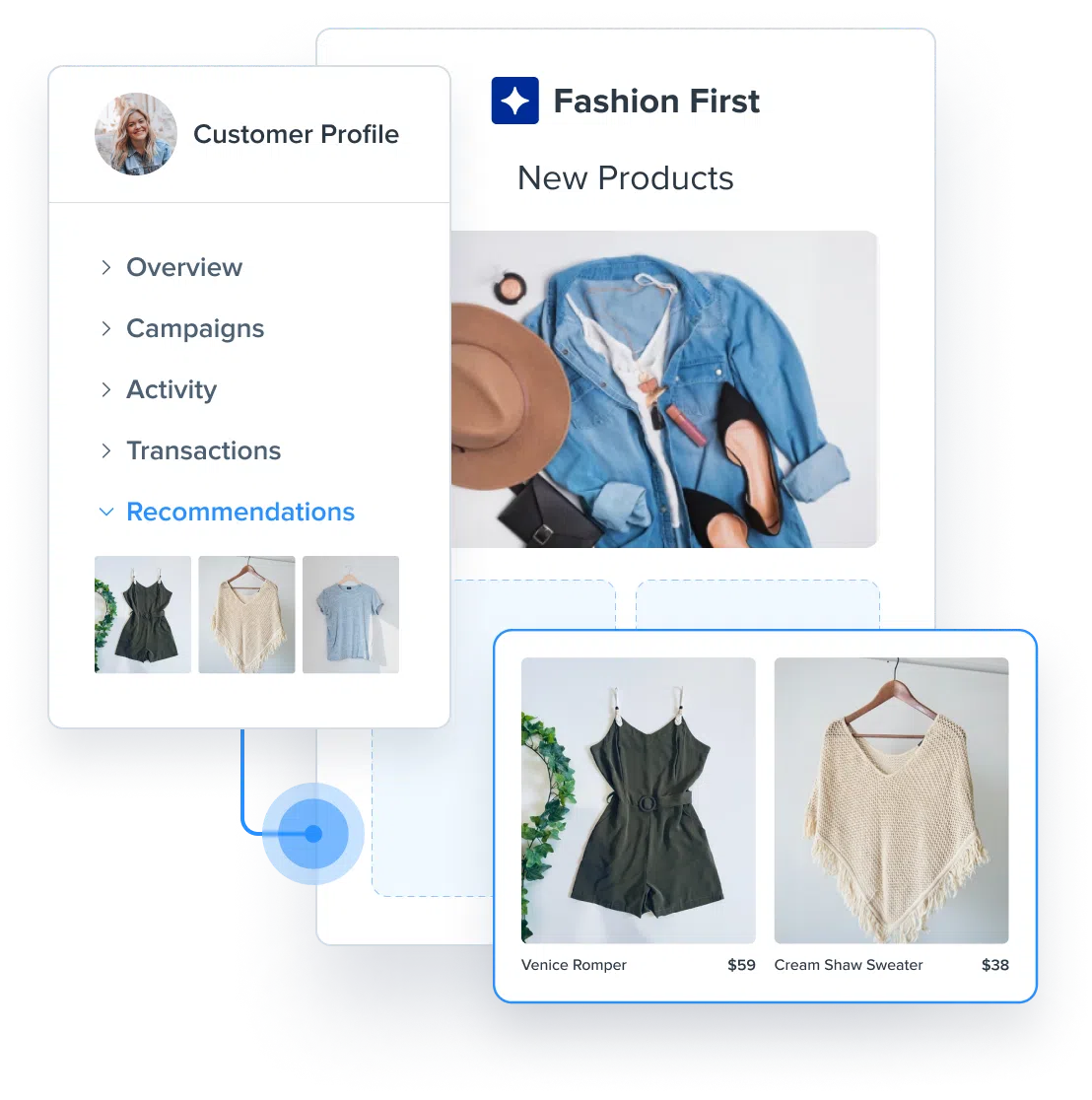
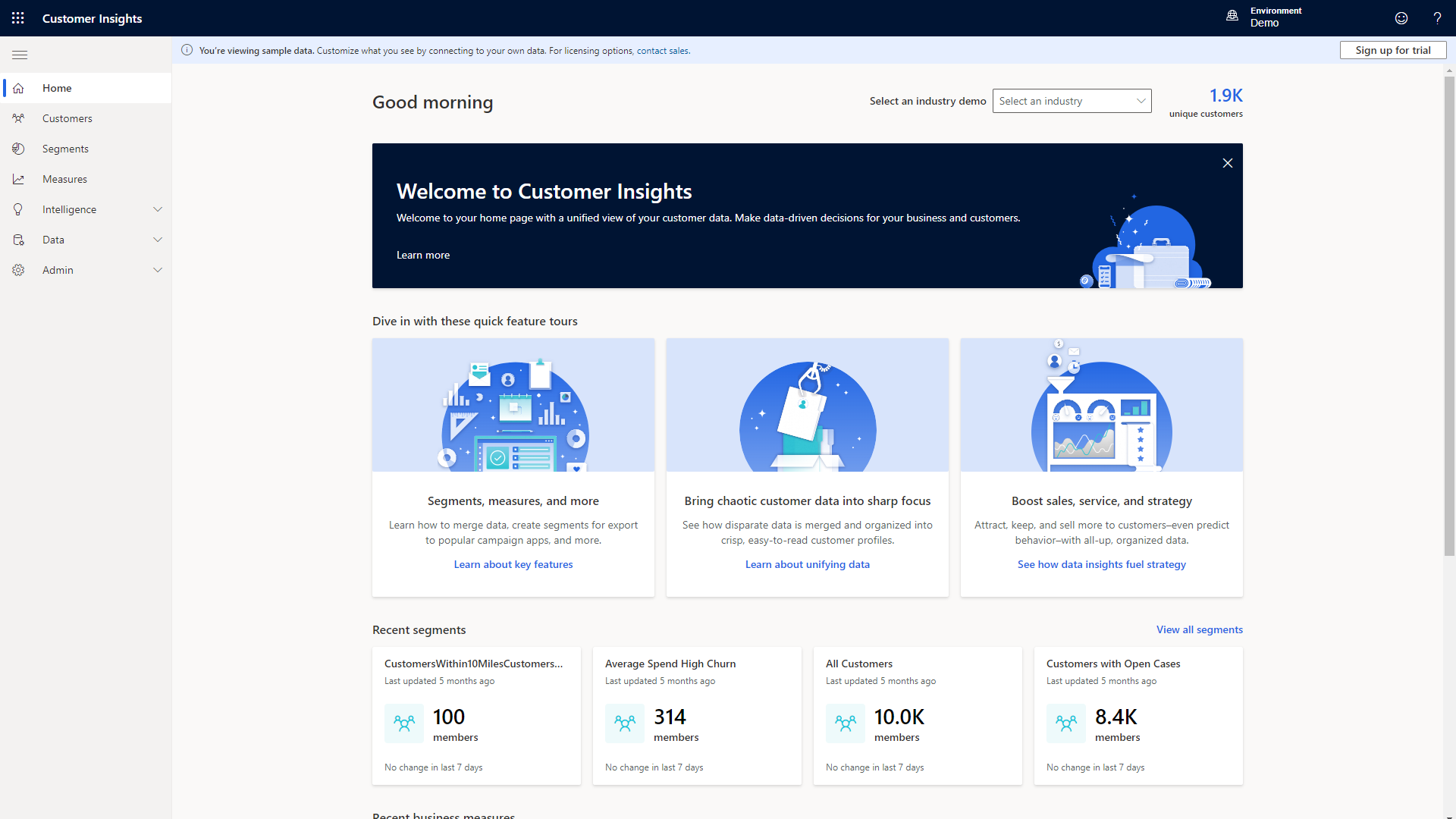
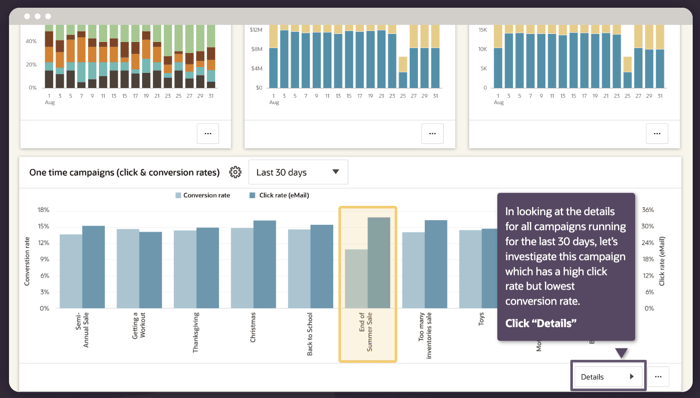
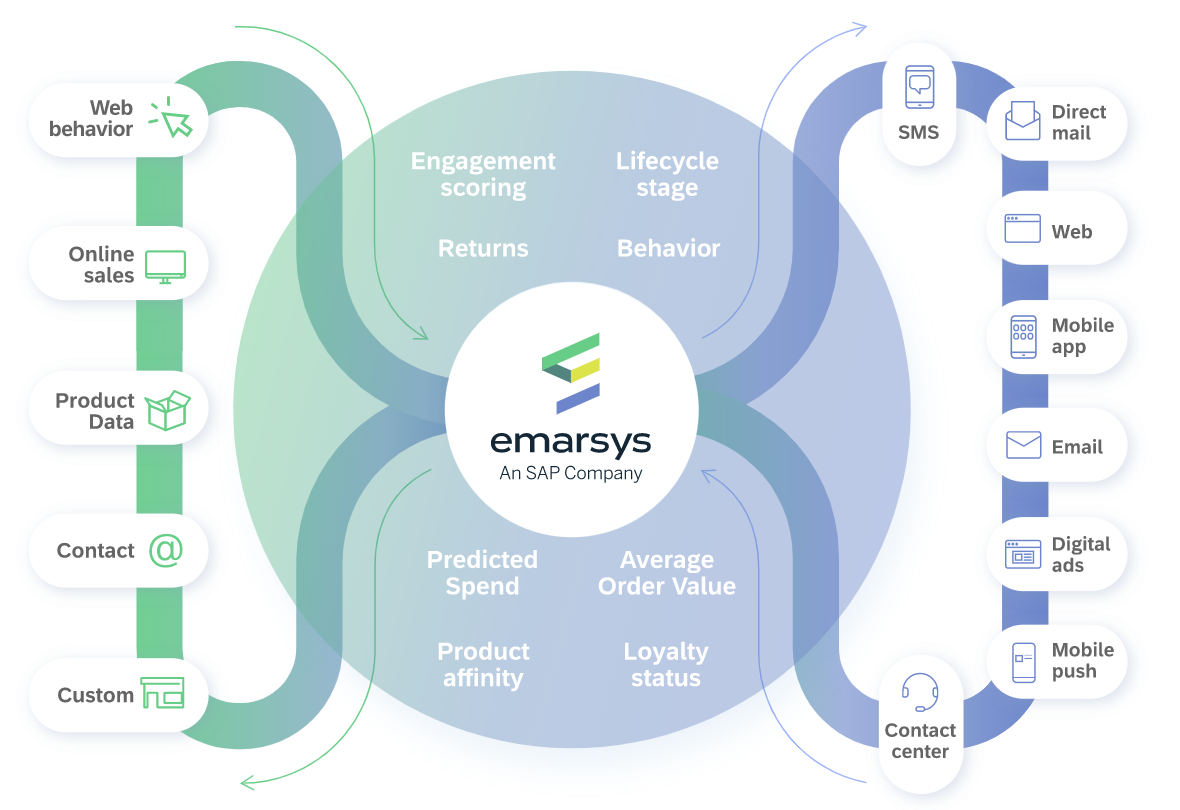
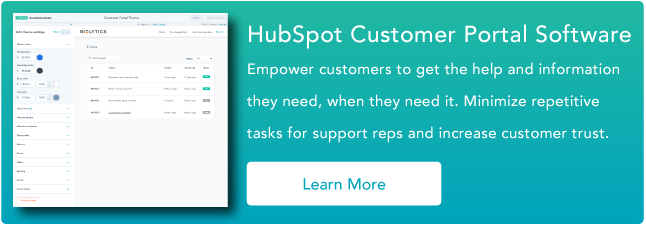
![→ Click here to access 5 free cover letter templates [Free Download]](https://i4lead.com/wp-content/uploads/2023/05/3f347702-d7e9-4e59-9fe4-be4cd7bad191.png)
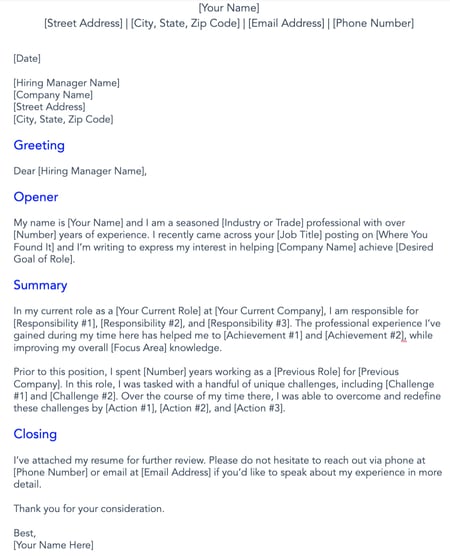
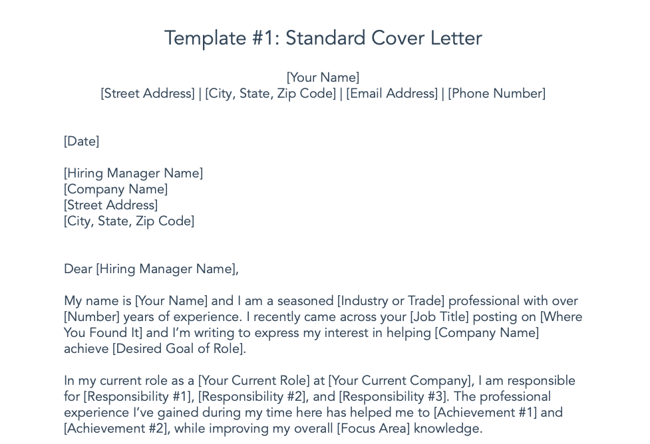

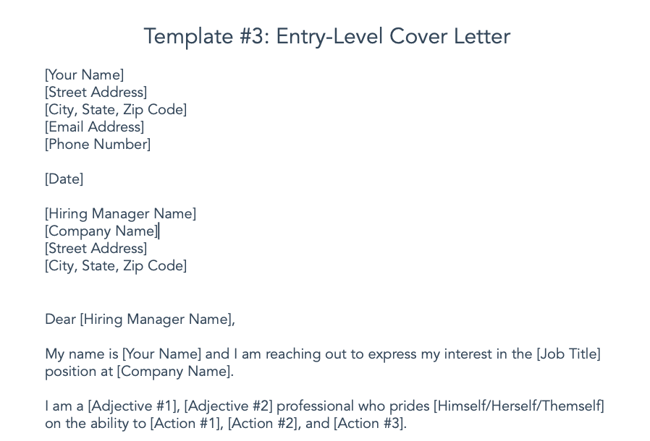

.png)
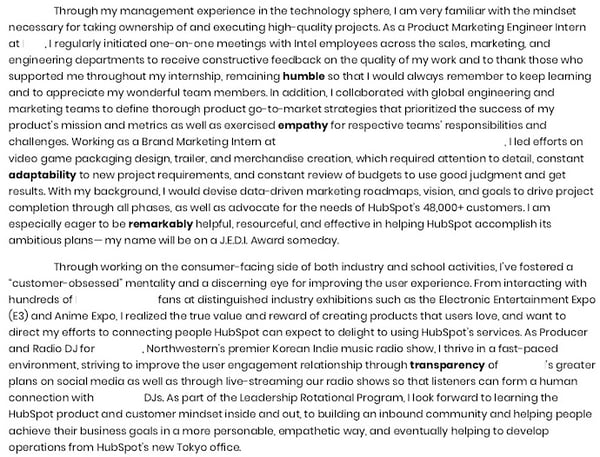
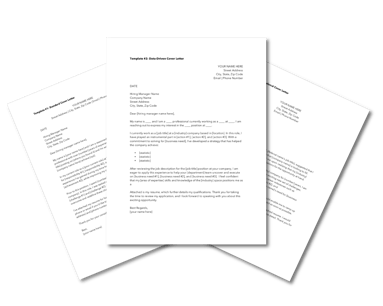
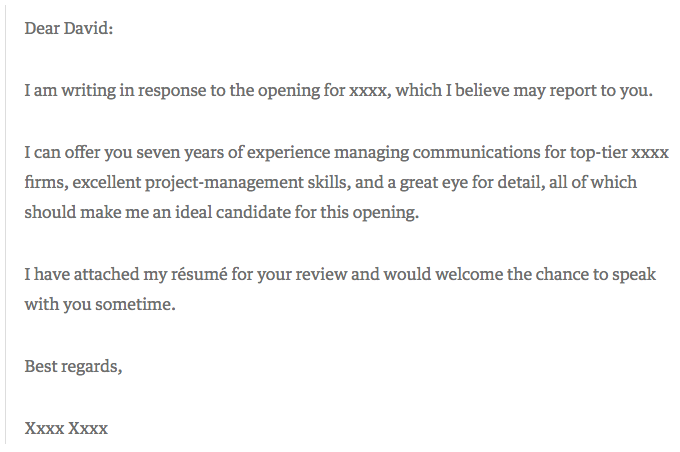
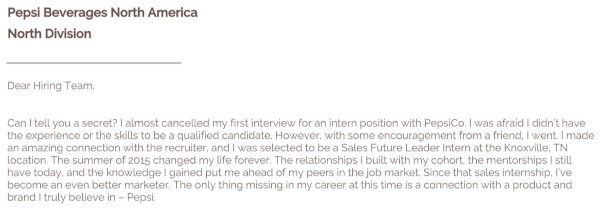
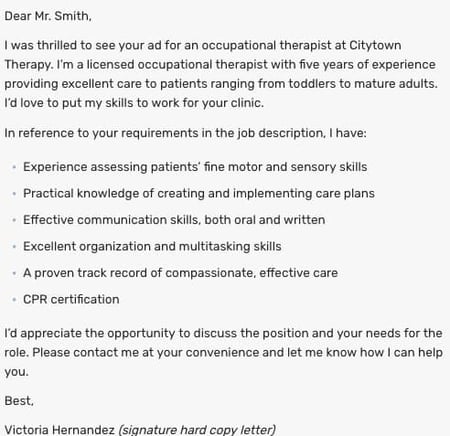
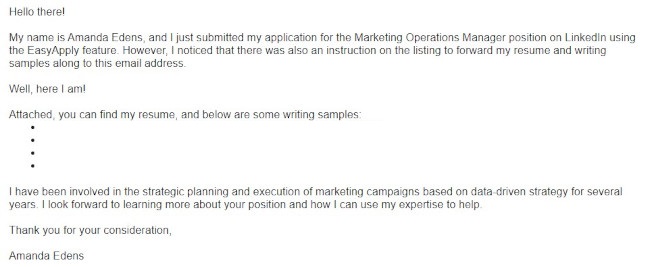 Edens knows that the body of the email is prime real estate to get the hiring manager’s attention, but she also doesn’t want to overwhelm the recipient with too much information since a cover letter was not requested. This short cover letter is the result. You’ll notice that she uses casual and breezy language to convey personality and enthusiasm, and she keeps her paragraphs succinct.
Edens knows that the body of the email is prime real estate to get the hiring manager’s attention, but she also doesn’t want to overwhelm the recipient with too much information since a cover letter was not requested. This short cover letter is the result. You’ll notice that she uses casual and breezy language to convey personality and enthusiasm, and she keeps her paragraphs succinct.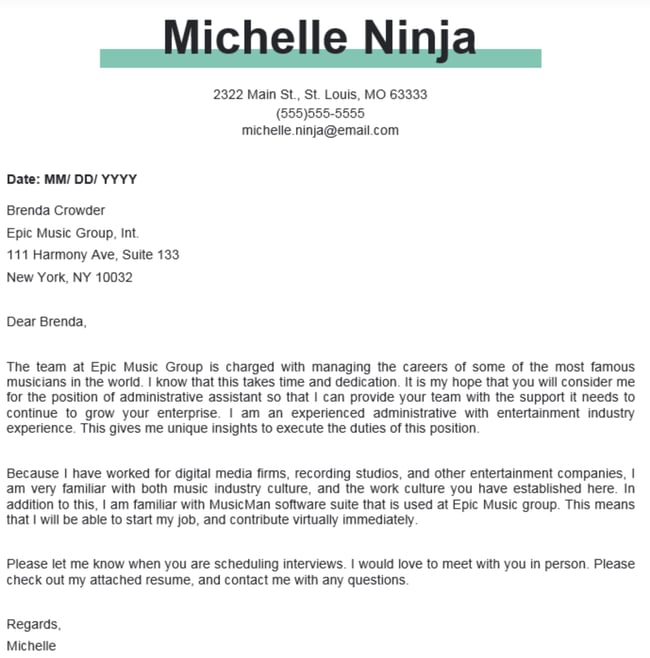
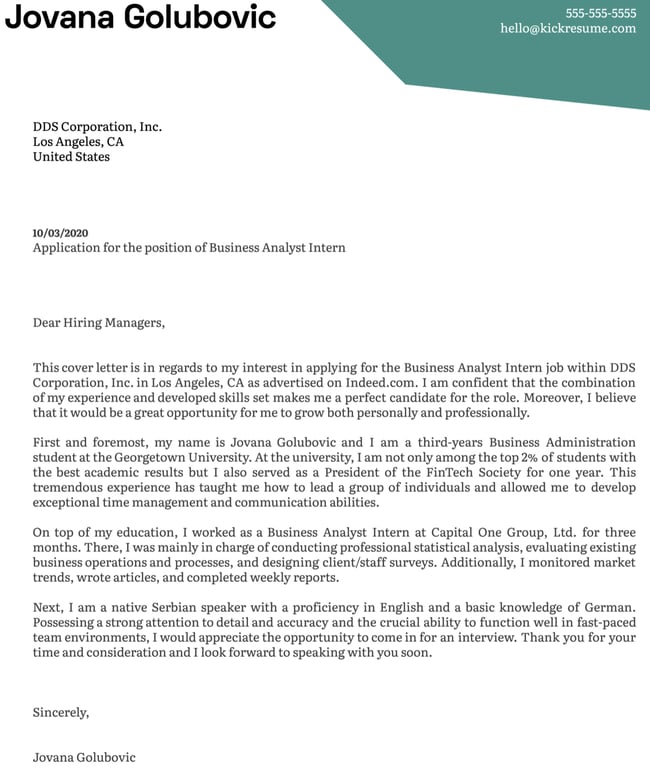
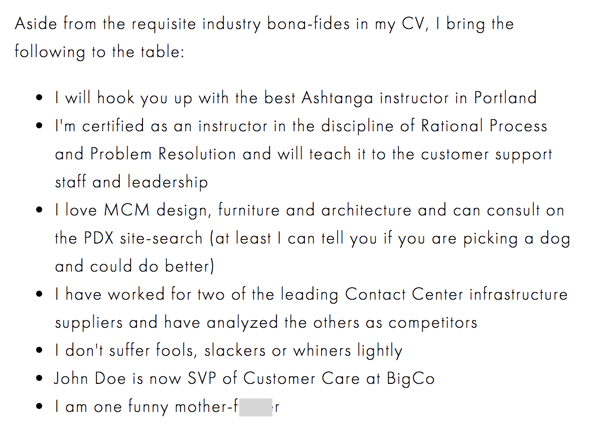
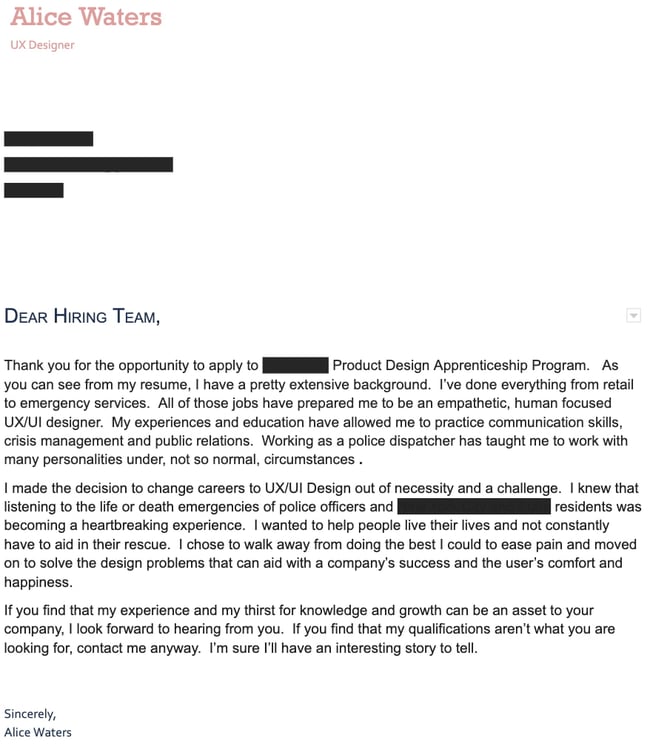 In this cover letter example, the applicant is pivoting to a career in UX. Not only does she make the case for why she should be hired, she shows the recruiter by using a simple, but effective design scheme that shows off her skills. It’s clean but effective.
In this cover letter example, the applicant is pivoting to a career in UX. Not only does she make the case for why she should be hired, she shows the recruiter by using a simple, but effective design scheme that shows off her skills. It’s clean but effective.

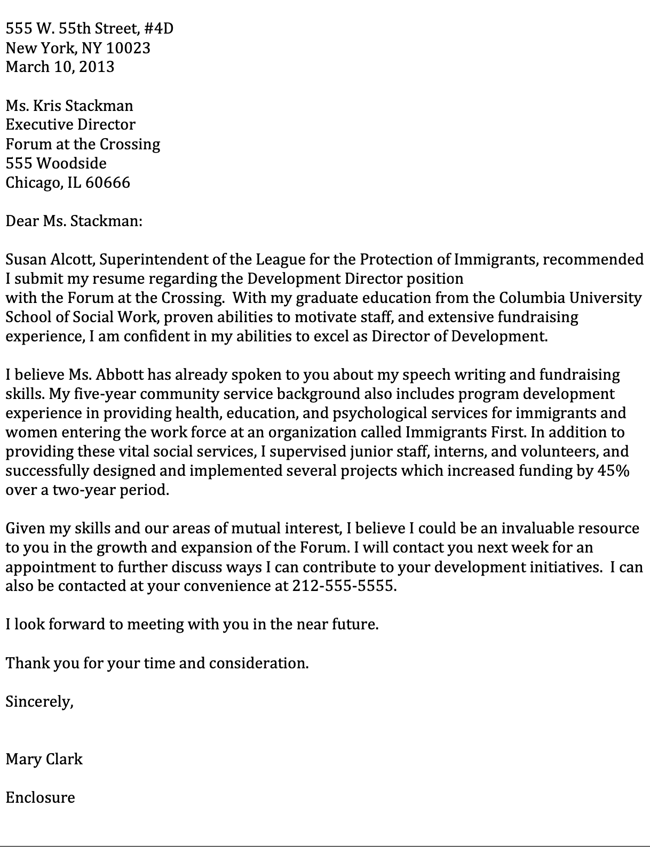

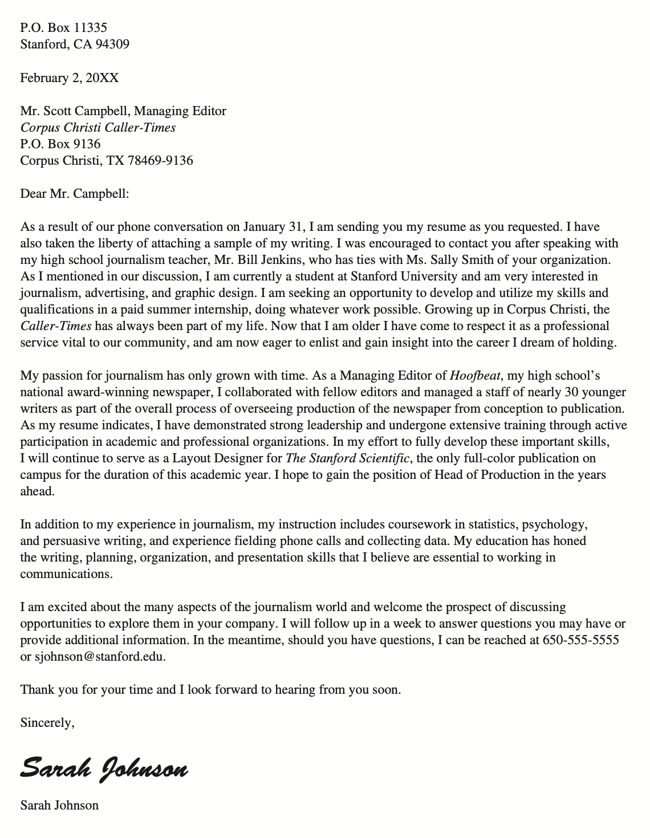
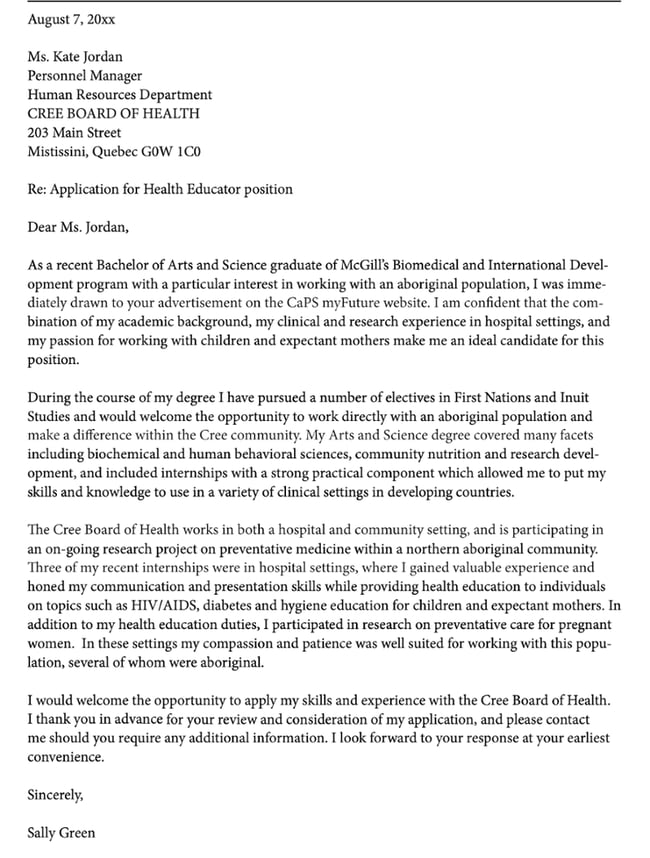
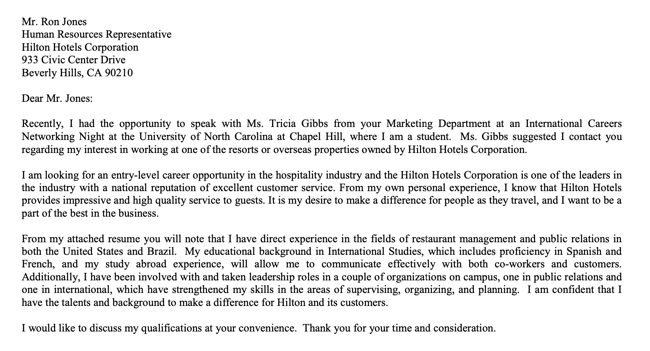
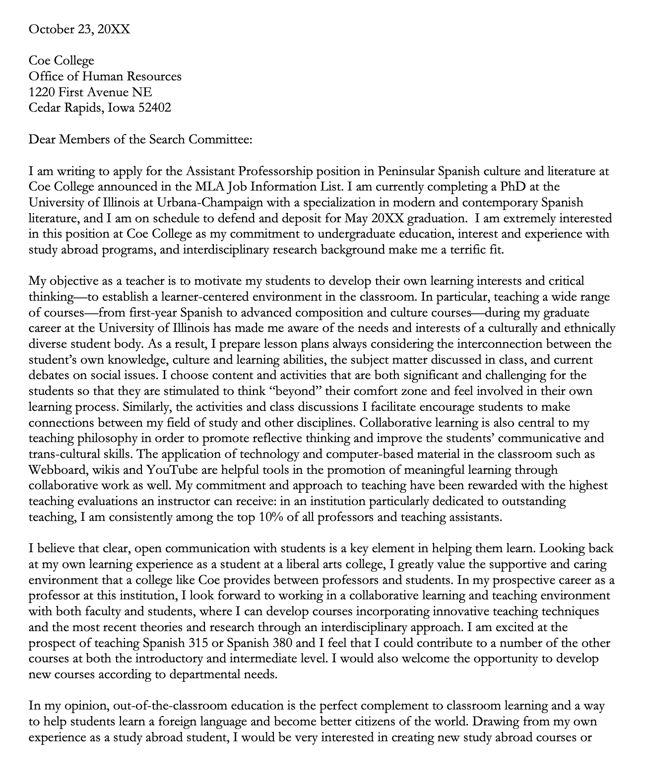

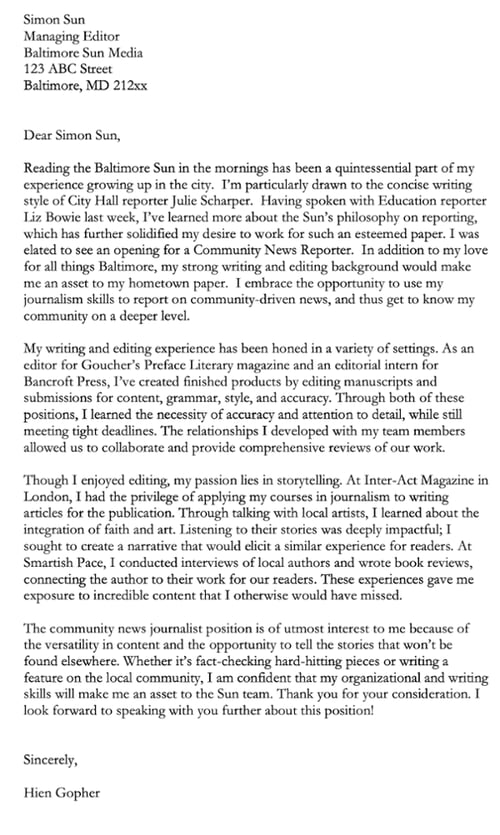
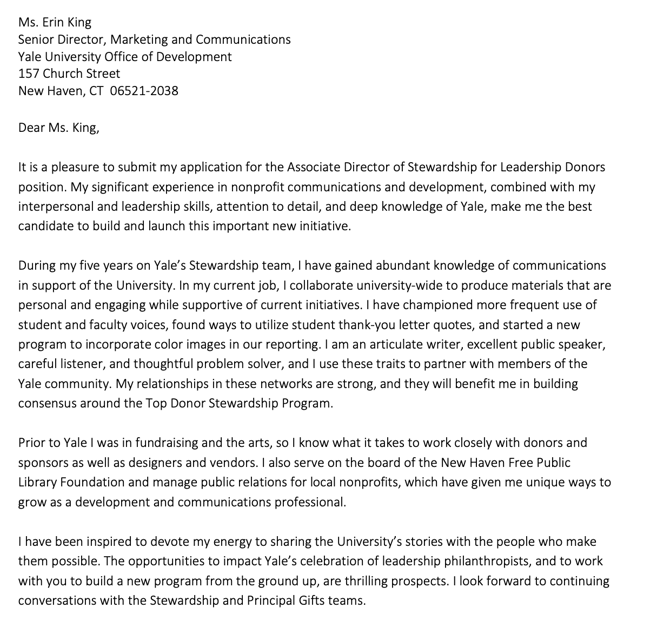
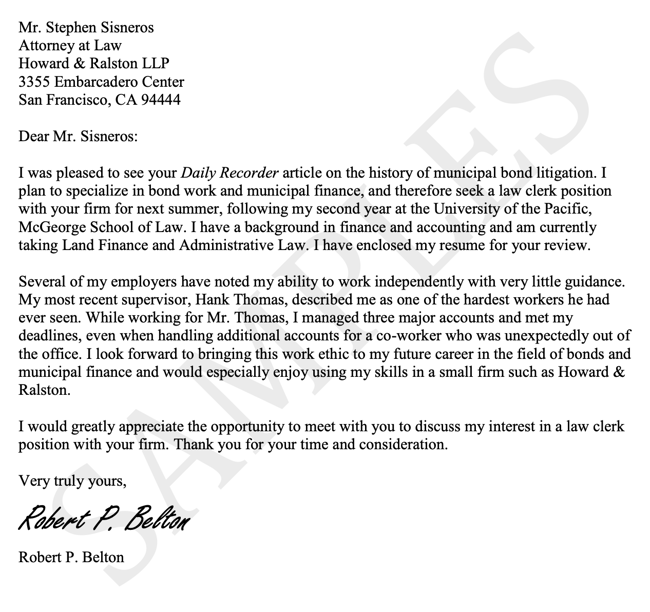
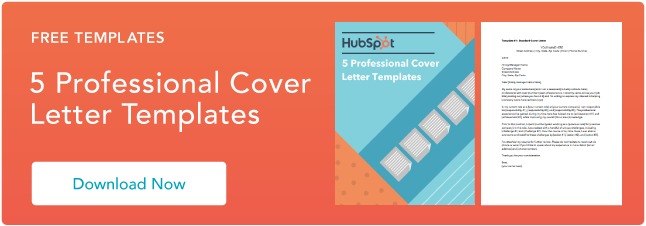
![Download Now: 10 Competitive Analysis Templates [Free Templates]](https://i4lead.com/wp-content/uploads/2023/05/b3ec18aa-f4b2-45e9-851f-6d359263e671.png)


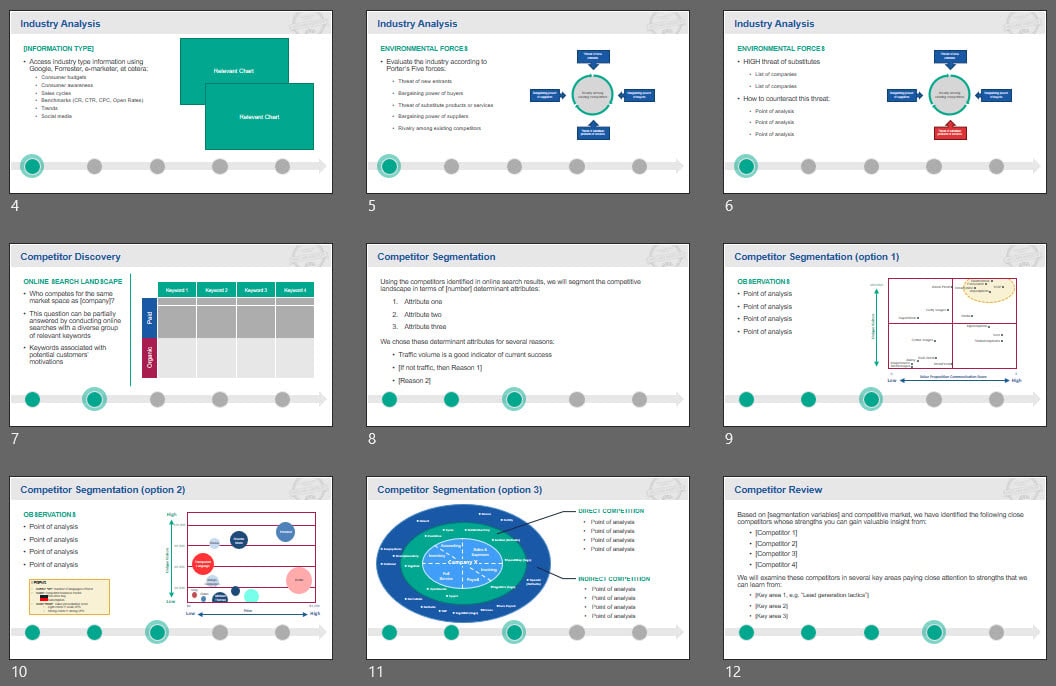
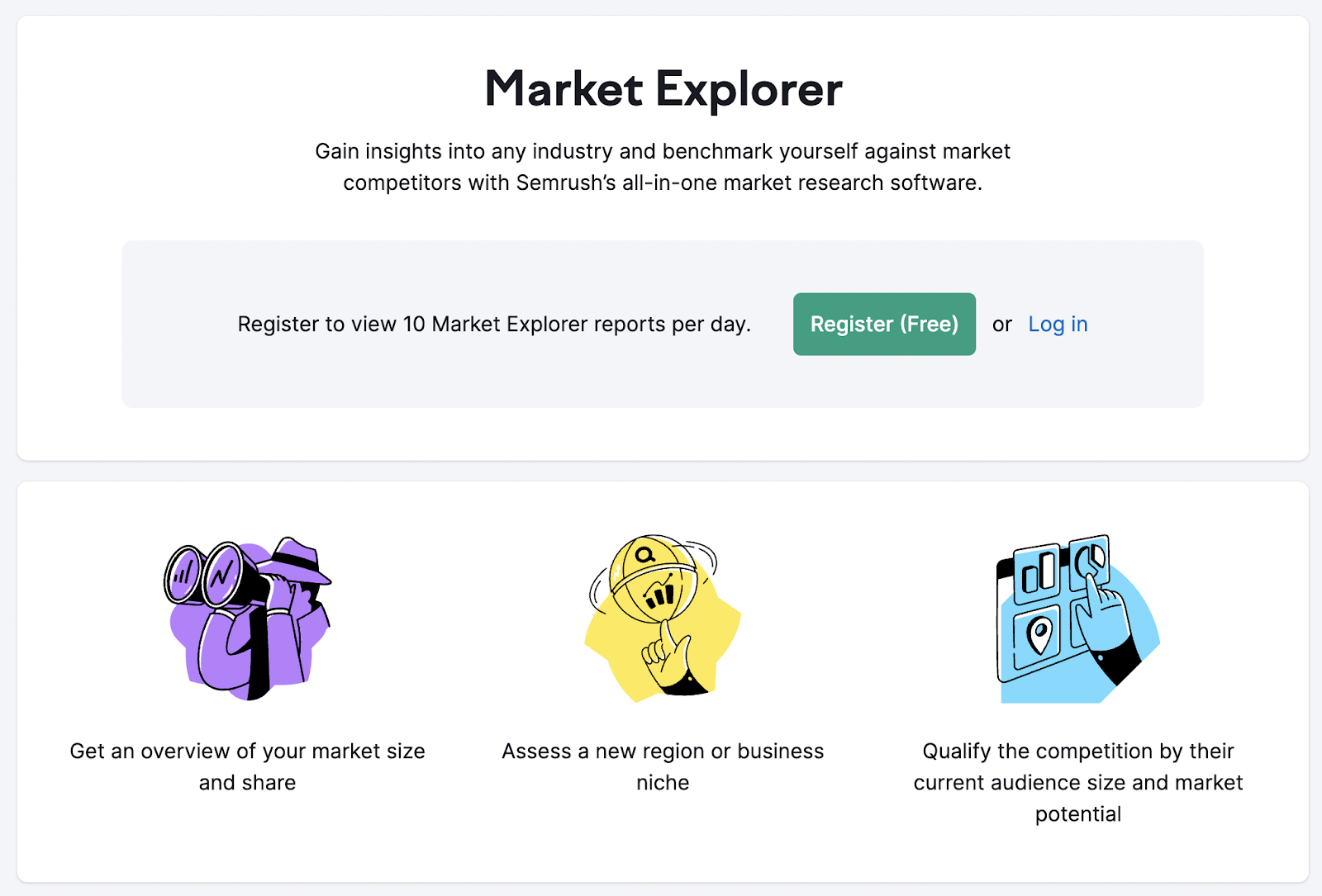
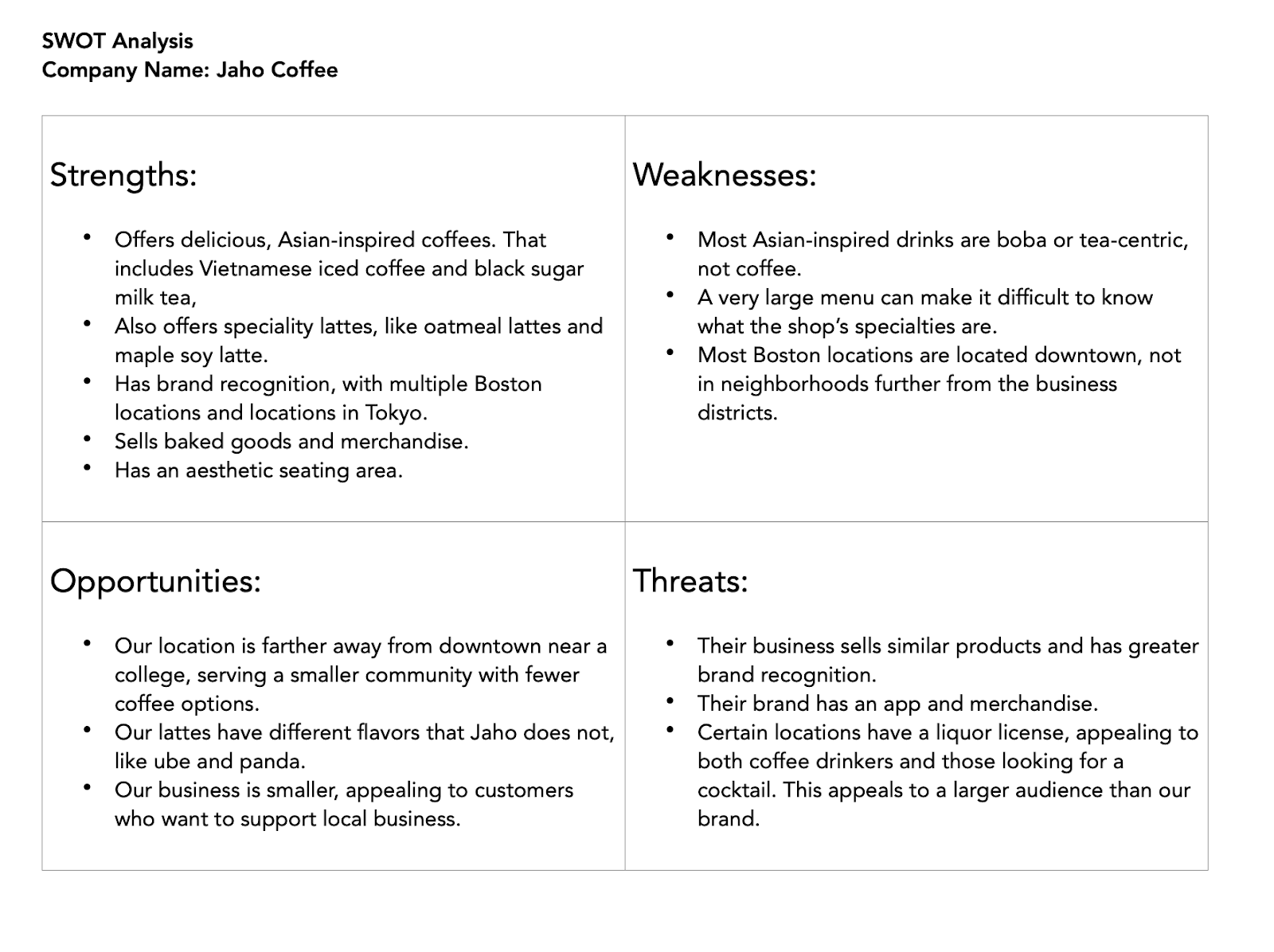
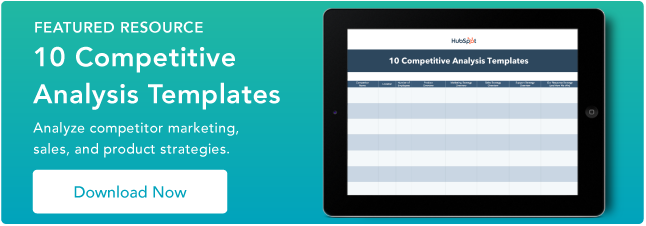
![Free Guide: How to Use AI in Content Marketing [Download Now]](https://i4lead.com/wp-content/uploads/2023/05/3e25e192-30c3-40c1-a7da-a4d054c9e157-11.png)
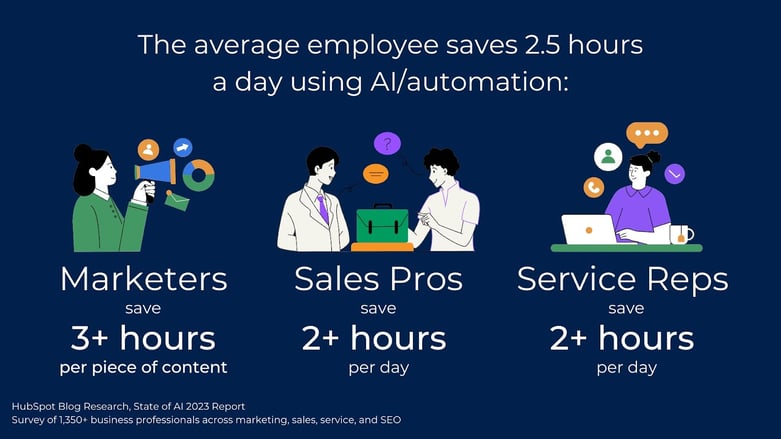

![The HubSpot Blog’s State of AI Report [New Data]-May-15-2023-03-14-33-0703-PM](https://blog.hubspot.com/hs-fs/hubfs/Google Drive Integration/The HubSpot Blog’s State of AI Report [New Data]-May-15-2023-03-14-33-0703-PM.jpeg?width=1600&height=900&name=The HubSpot Blog’s State of AI Report [New Data]-May-15-2023-03-14-33-0703-PM.jpeg)
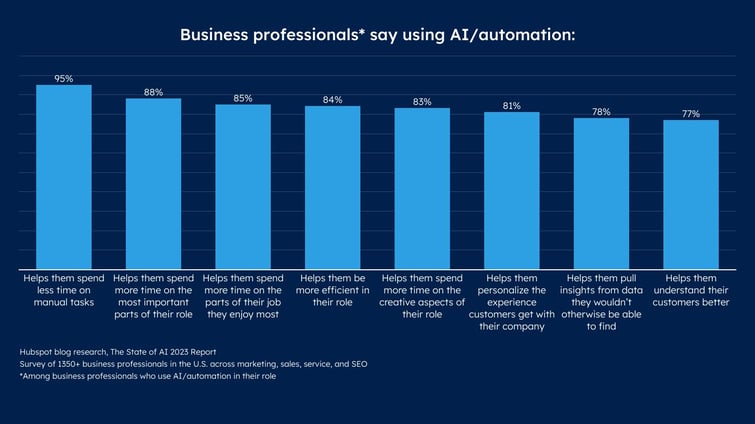
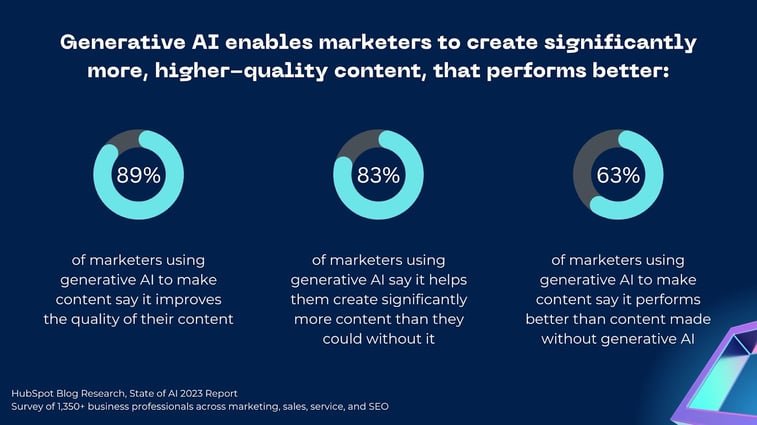
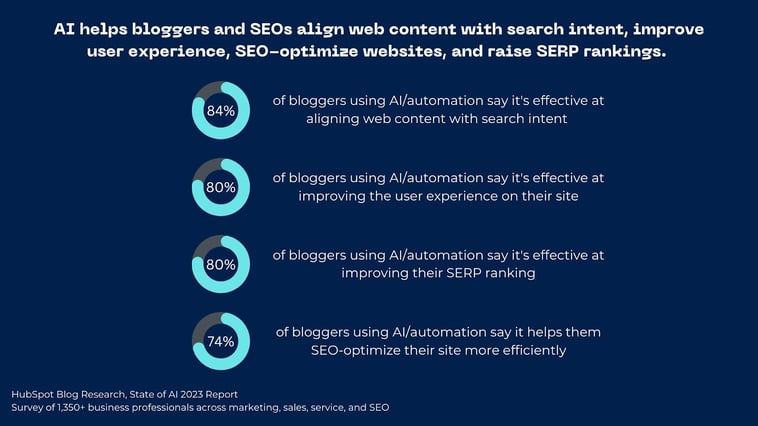

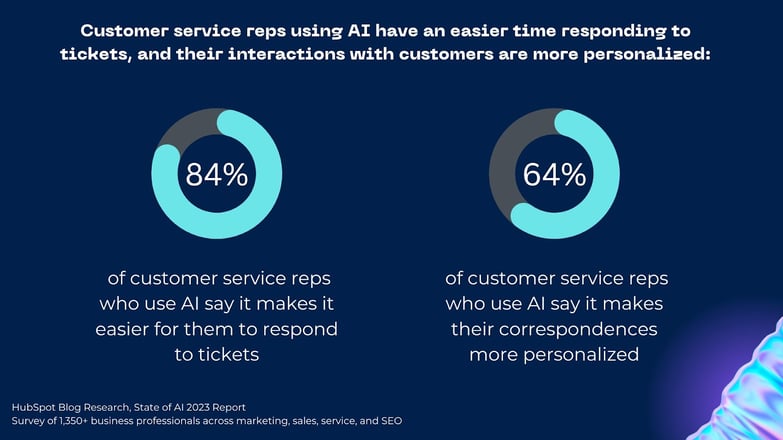
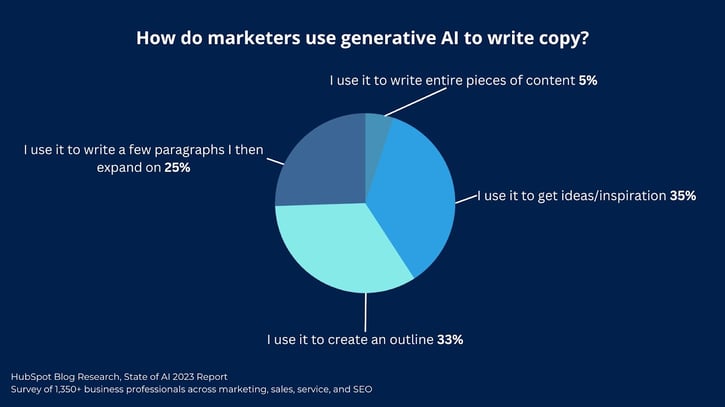
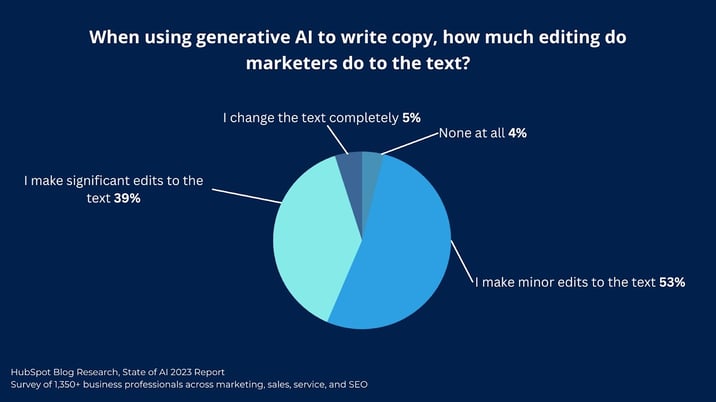
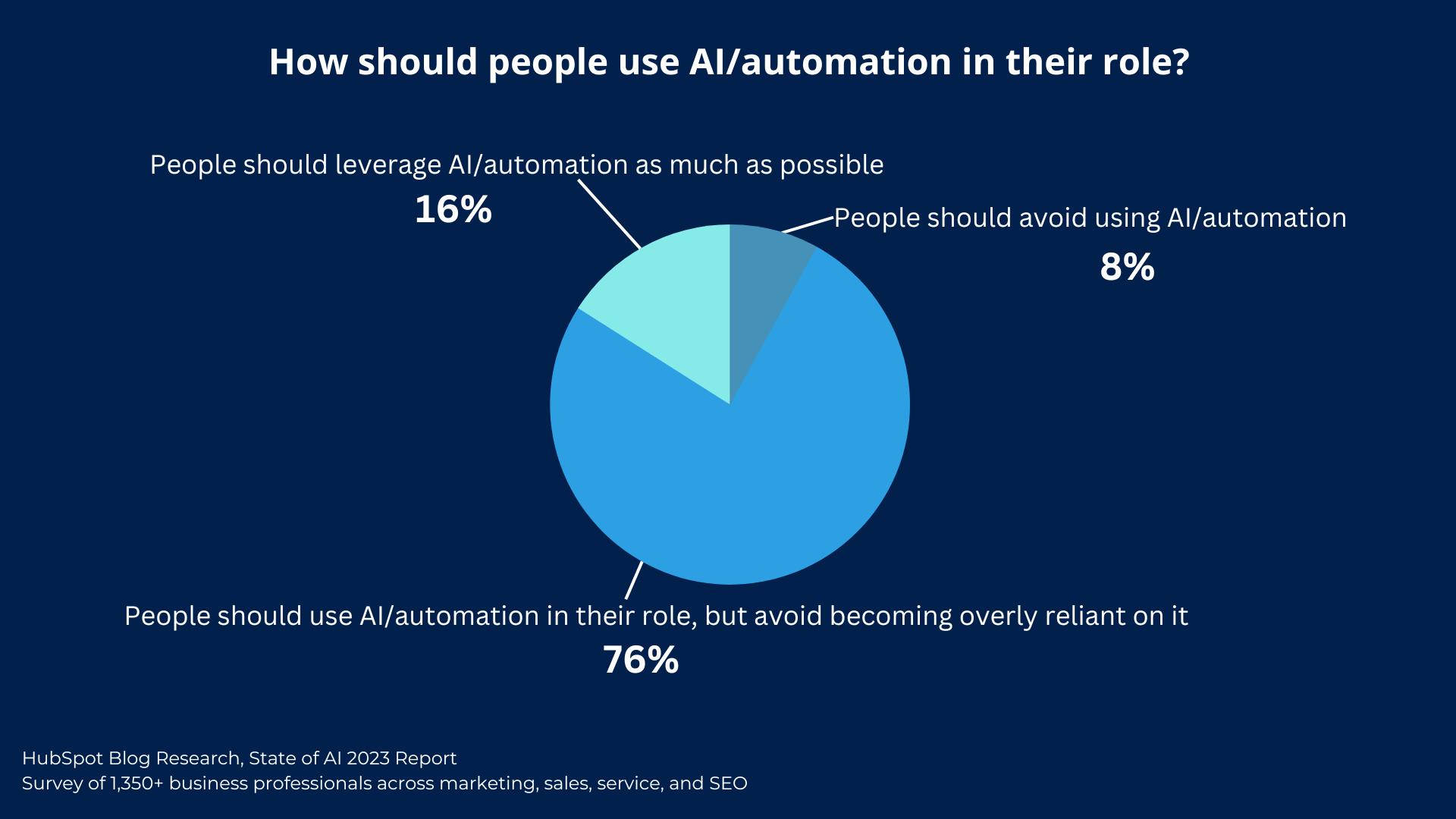
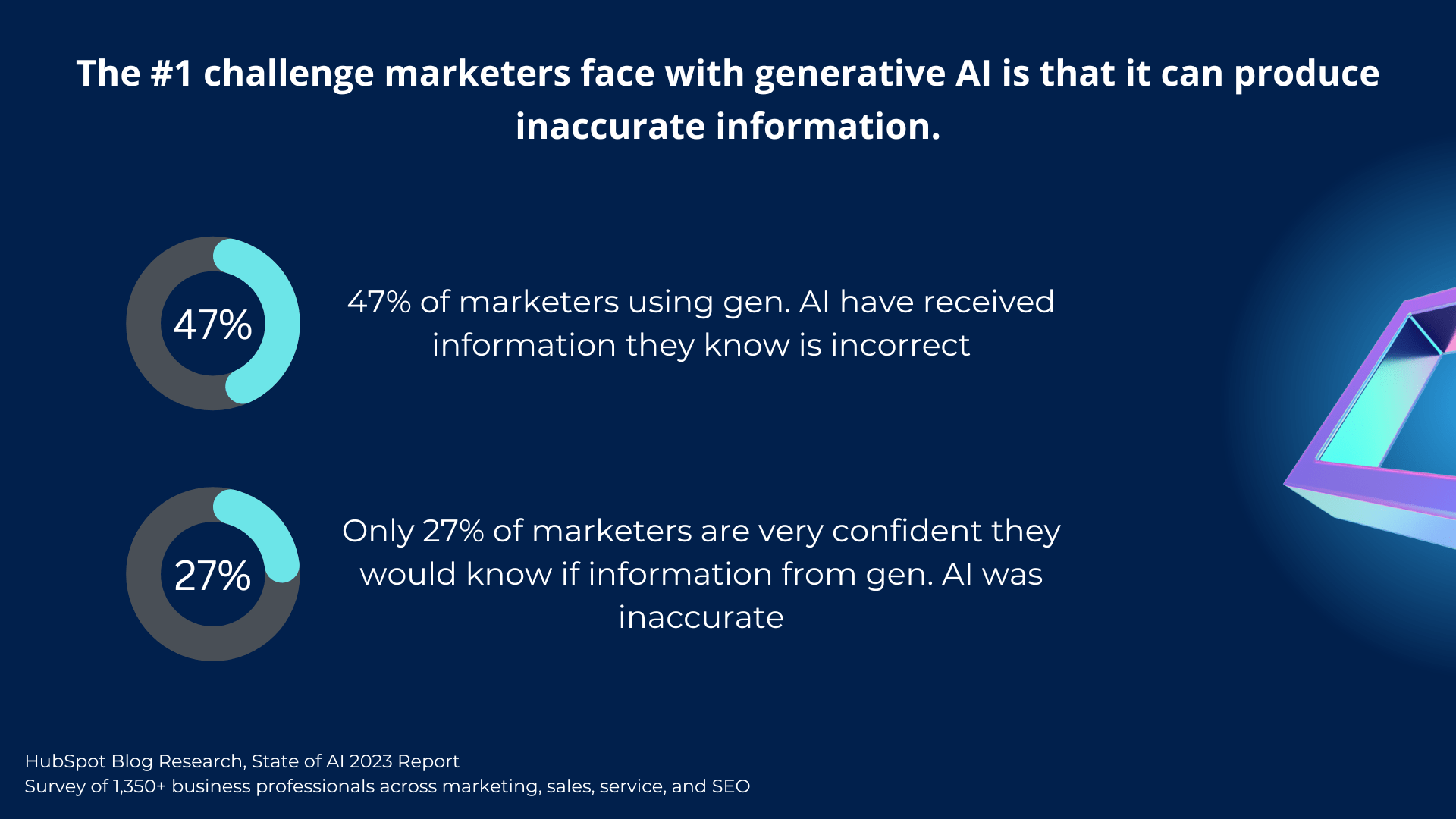
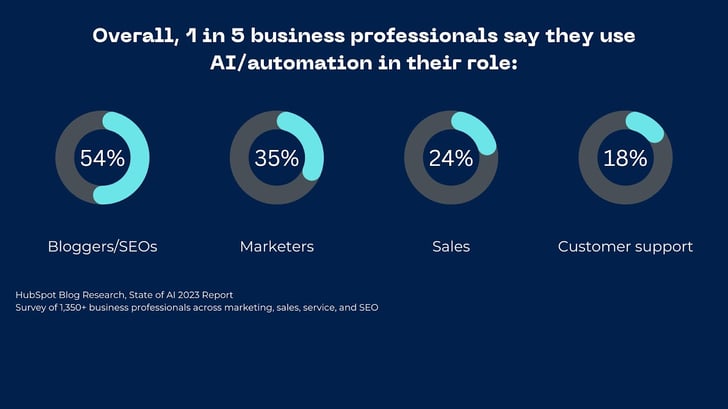
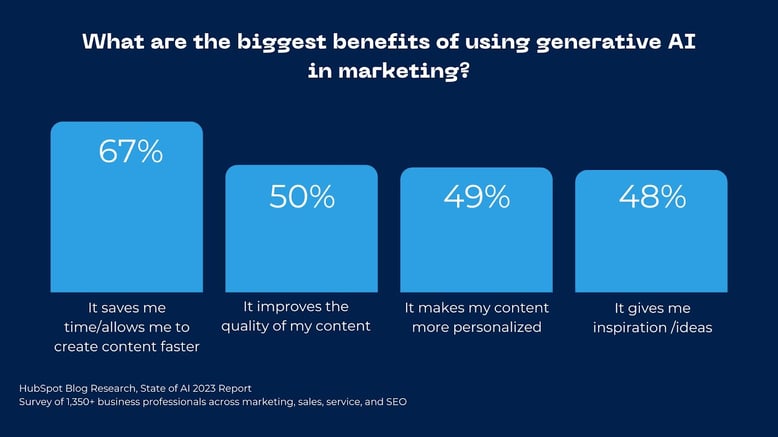
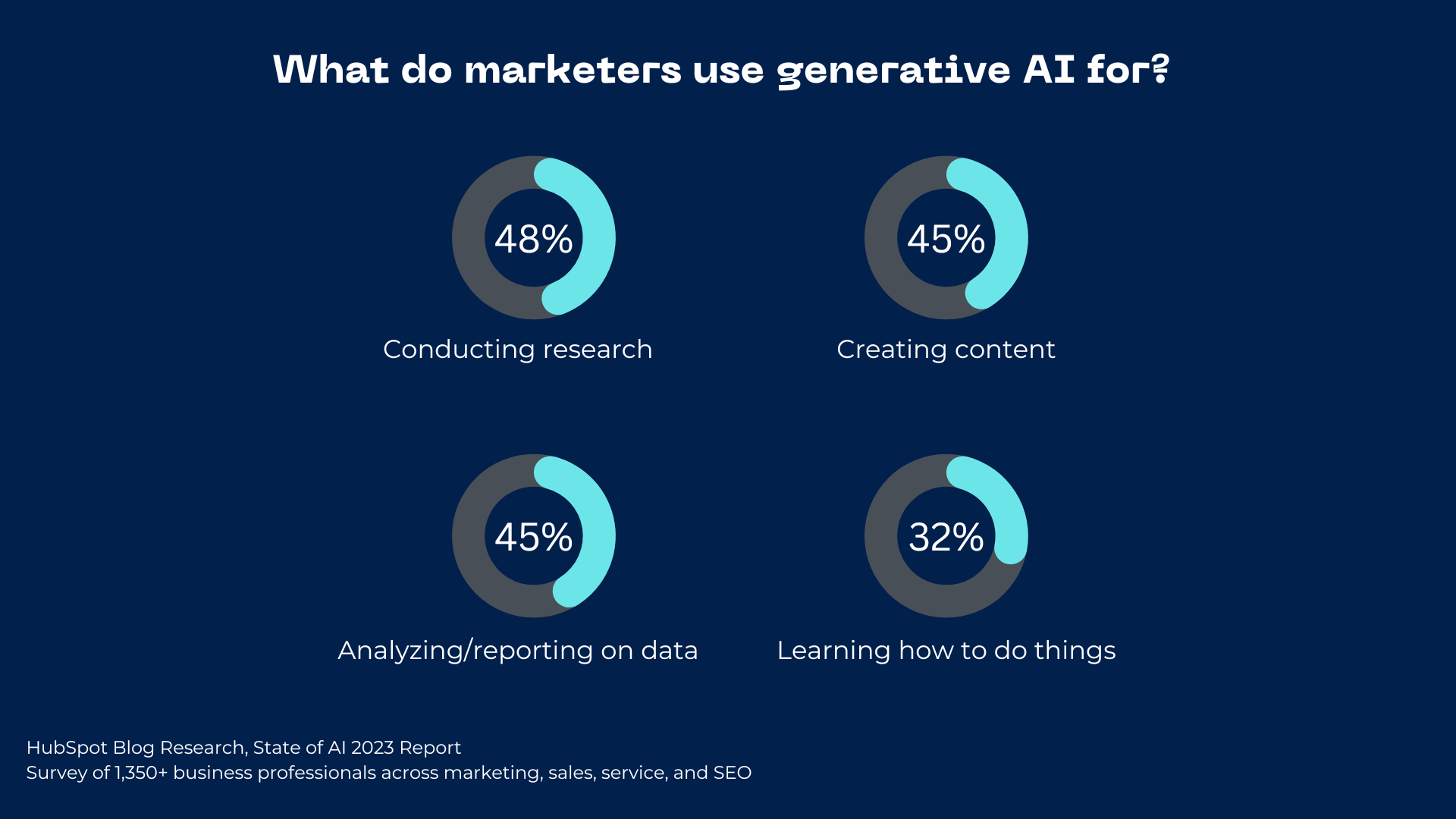
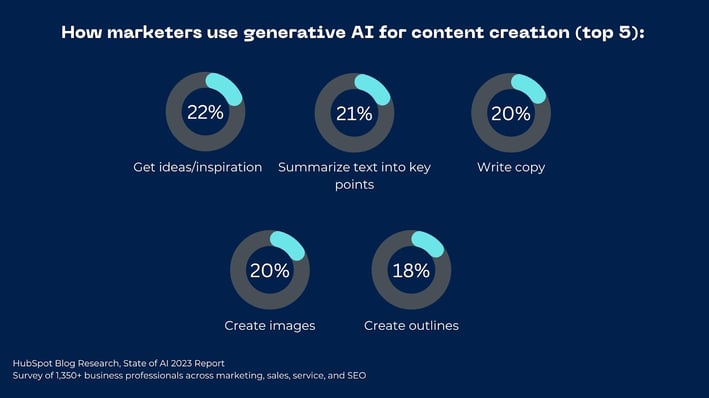
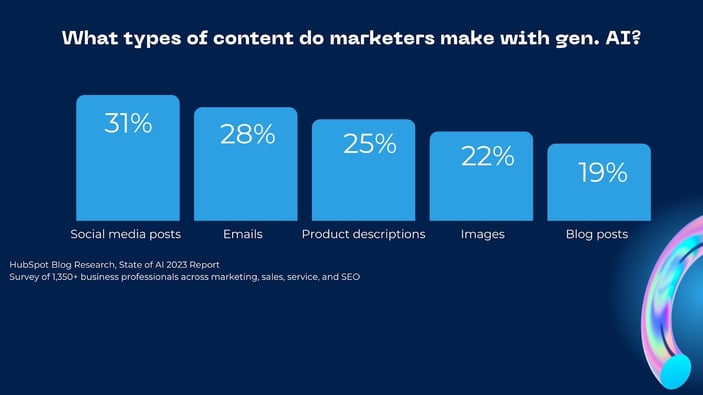
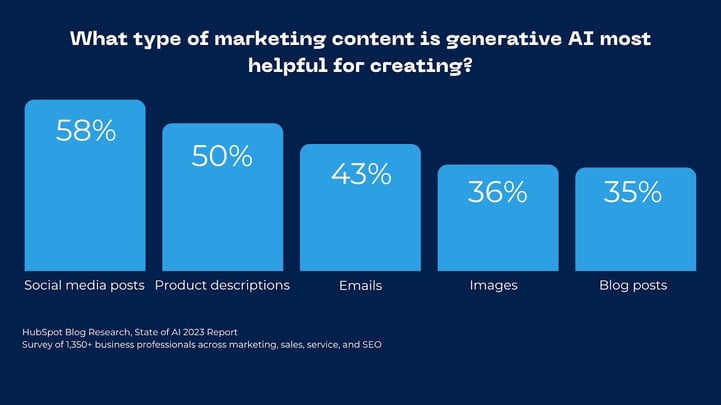
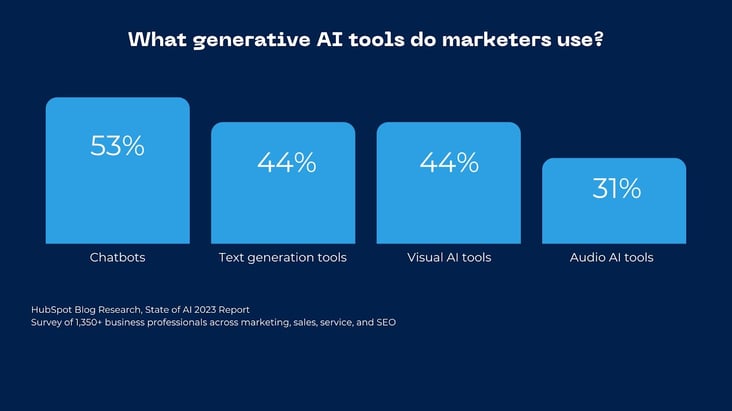
![The HubSpot Blog’s State of AI Report [New Data]-May-15-2023-03-14-32-8343-PM](https://blog.hubspot.com/hs-fs/hubfs/Google Drive Integration/The HubSpot Blog’s State of AI Report [New Data]-May-15-2023-03-14-32-8343-PM.jpeg?width=1600&height=900&name=The HubSpot Blog’s State of AI Report [New Data]-May-15-2023-03-14-32-8343-PM.jpeg)
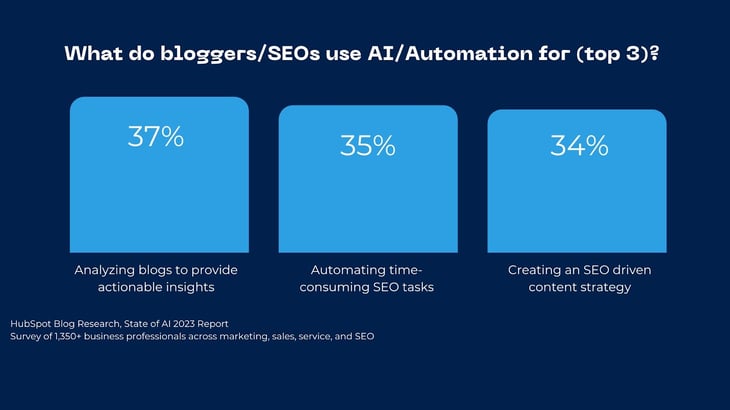
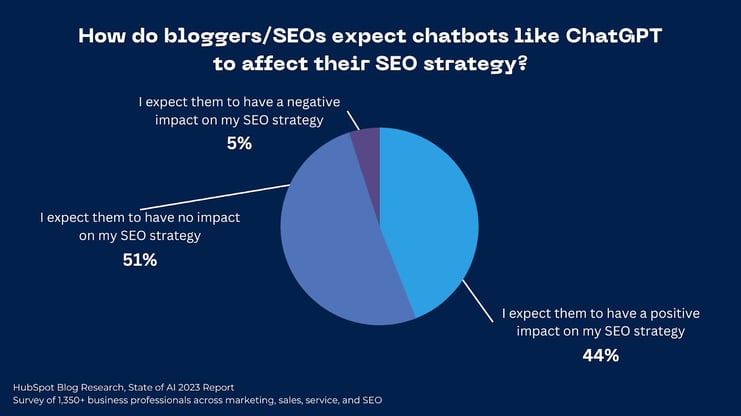
![The HubSpot Blog’s State of AI Report [New Data]-May-15-2023-03-14-33-7621-PM](https://blog.hubspot.com/hs-fs/hubfs/Google Drive Integration/The HubSpot Blog’s State of AI Report [New Data]-May-15-2023-03-14-33-7621-PM.jpeg?width=1600&height=900&name=The HubSpot Blog’s State of AI Report [New Data]-May-15-2023-03-14-33-7621-PM.jpeg)

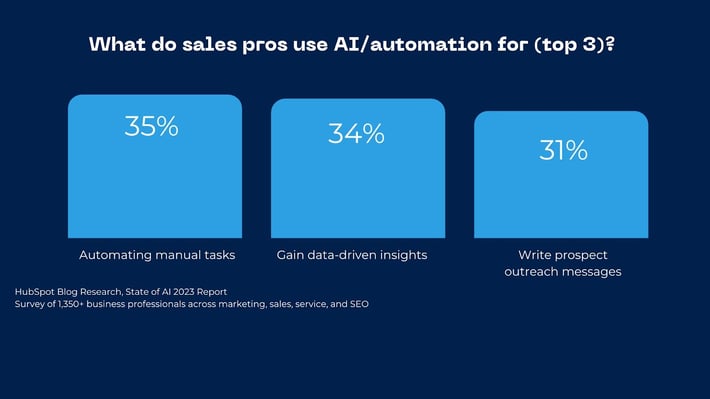
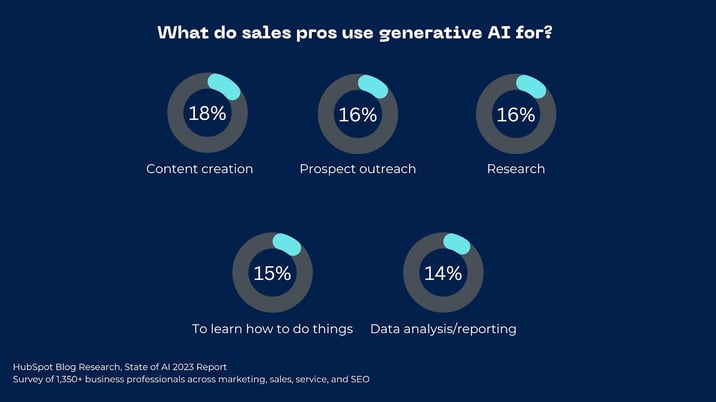
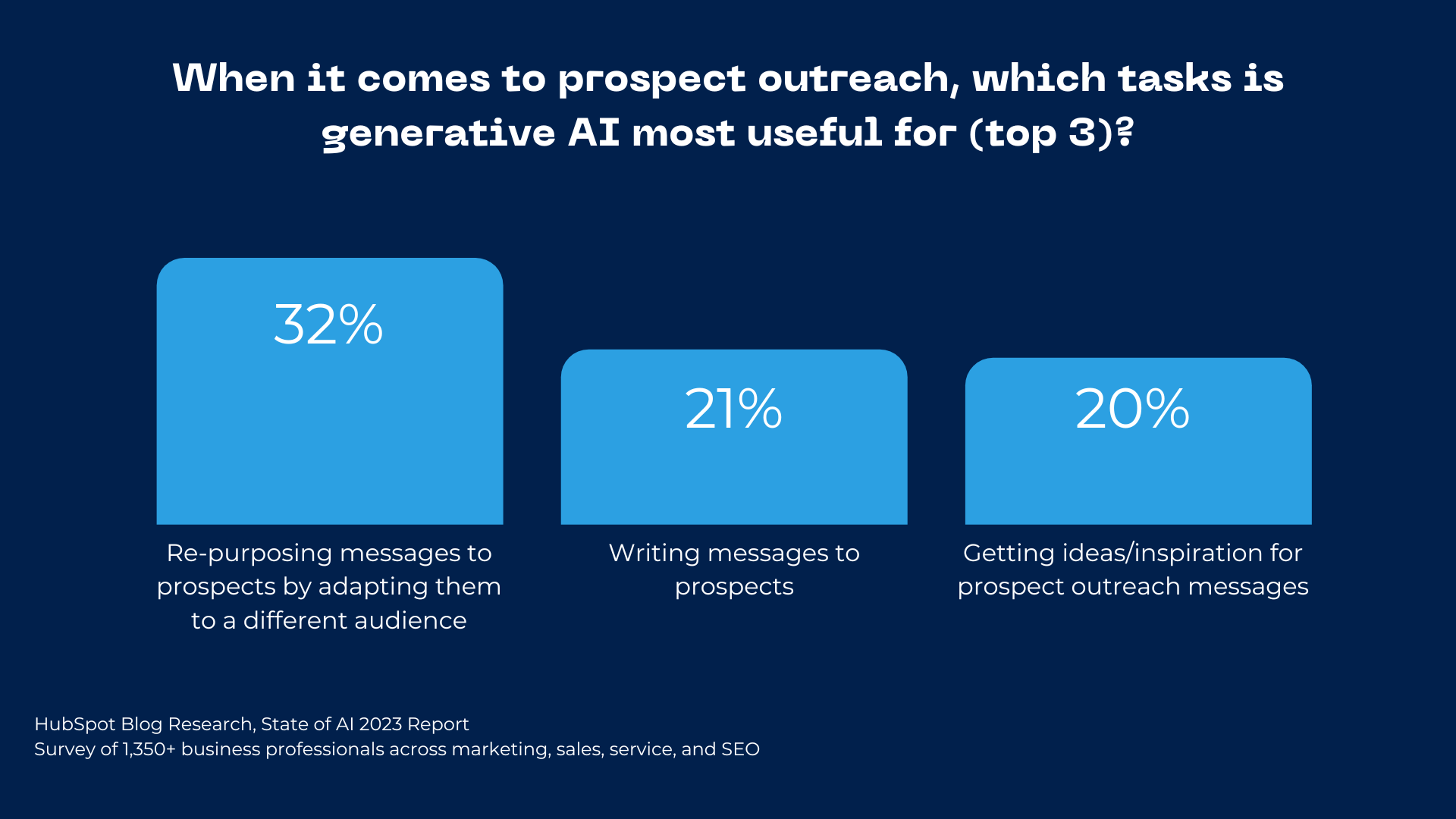
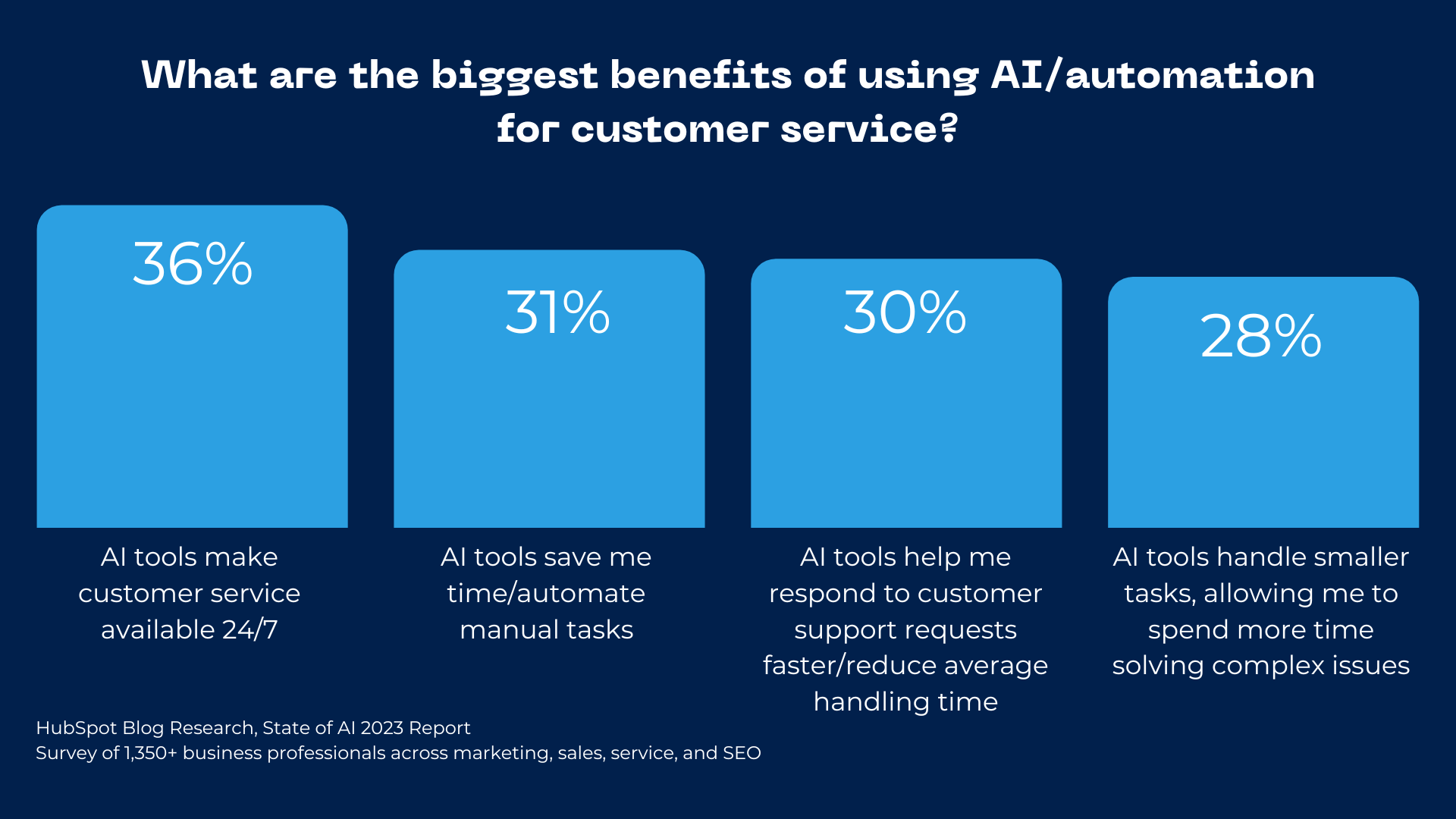
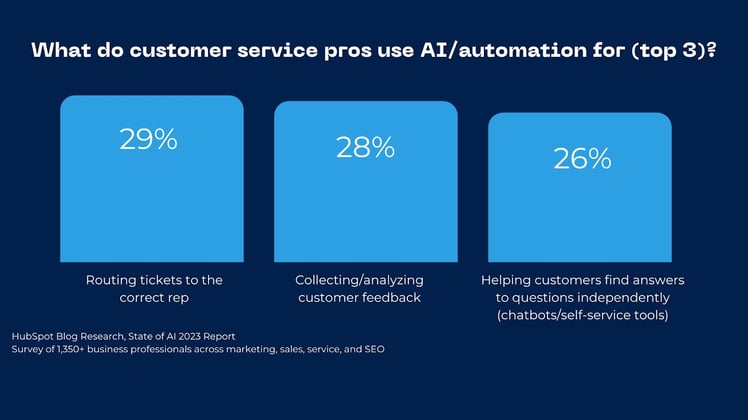

![→ Access Now: Google Sheets Templates [Free Kit]](https://i4lead.com/wp-content/uploads/2023/05/e7cd3f82-cab9-4017-b019-ee3fc550e0b5-3.png)
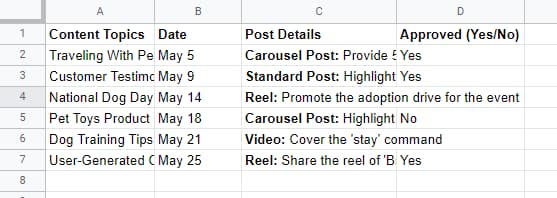 Or this one:
Or this one: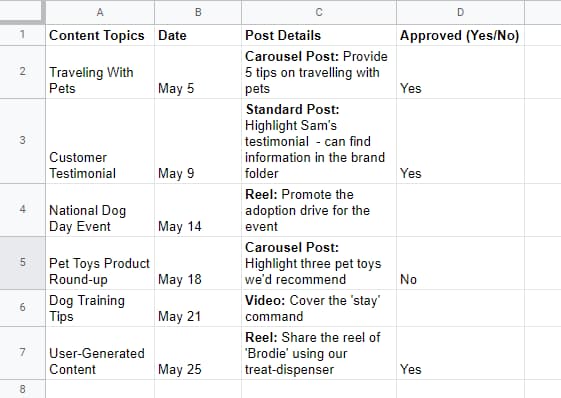 You likely chose the second option — where the wrap text feature is enabled for all cells.
You likely chose the second option — where the wrap text feature is enabled for all cells. Step 2: Click the “Format” tab from the menu bar. Then, pick the “Wrapping” option from the drop-down menu.
Step 2: Click the “Format” tab from the menu bar. Then, pick the “Wrapping” option from the drop-down menu. Step 3: Finally, click on “Wrap.”
Step 3: Finally, click on “Wrap.”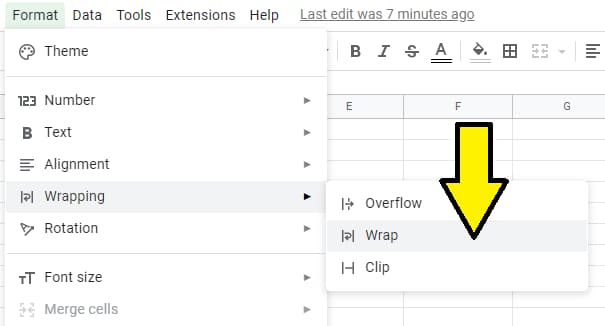 Step 4: You’re all set! There’s nothing else to do. The wrap text feature will be applied to all the chosen cells, providing a more organized view of the content.
Step 4: You’re all set! There’s nothing else to do. The wrap text feature will be applied to all the chosen cells, providing a more organized view of the content.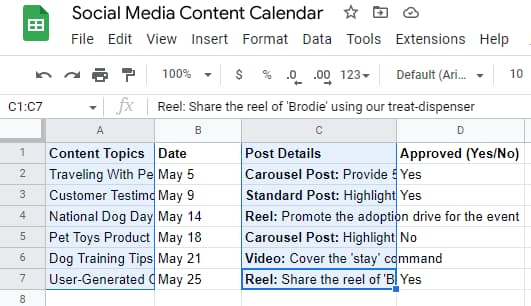 Step 2: Next, select the “text wrapping” icon in the toolbar, which can be found to the right of the alignment buttons.
Step 2: Next, select the “text wrapping” icon in the toolbar, which can be found to the right of the alignment buttons.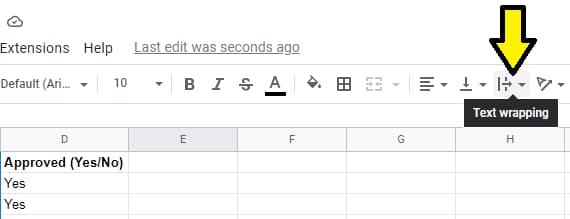 Step 3: Choose the middle icon that looks like an upside-down undo button from the three options that pop up, and you’re good to go.
Step 3: Choose the middle icon that looks like an upside-down undo button from the three options that pop up, and you’re good to go.
 Step 2: A box will pop up. Click on the “Cell” option, which will allow you to edit different elements of the selected cells (note: the default is the “text” option).
Step 2: A box will pop up. Click on the “Cell” option, which will allow you to edit different elements of the selected cells (note: the default is the “text” option).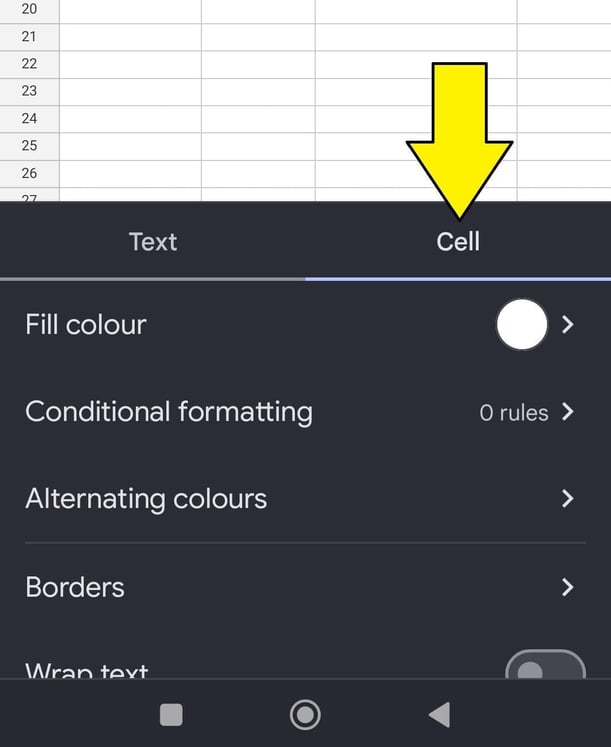 Step 3: Scroll down until you find the “Wrap text” option. Slide the switch to the on position, and you’re done. So, there it is — a simple tutorial on how to make the text fit on Google Sheets from your mobile device.
Step 3: Scroll down until you find the “Wrap text” option. Slide the switch to the on position, and you’re done. So, there it is — a simple tutorial on how to make the text fit on Google Sheets from your mobile device.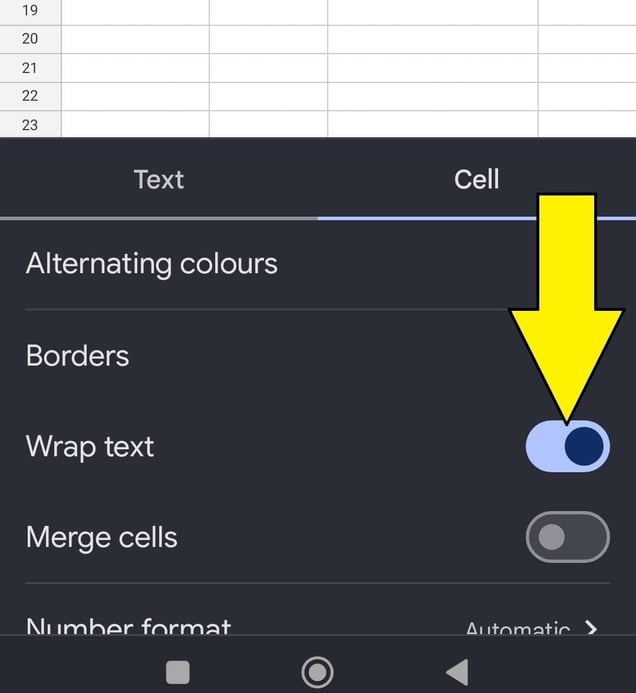 Does wrapping text make a difference?
Does wrapping text make a difference?